THE WINE MERCHANT.
An independent magazine for independent retailers Issue 135, May 2024


An independent magazine for independent retailers Issue 135, May 2024

Thirty-eight independents from across the UK have made their decision after a marathon day of tasting in London
Sparkling wine, Greek wine and orange wine were among the high-performing categories at the 2023 Wine Merchant Top 100 awards, as the independent trade’s leading wine competition returned to in-person judging for the first time since the pandemic at a new east London venue last month.
A team of 38 independent wine merchant judges gathered at Walthamstow’s Big Penny Social to put around 900 independent-exclusive wines through their paces. Indies from across the UK arrived in London from businesses as far-flung as Cornwall, Northern Ireland, north Wales and Scotland.
The rigorous judging process meant each of the Top 100 and 355 Highly Commended wines was tasted at least five times across the day, with senior judges Philip Amps (Amps Wine Merchants, Oundle, Cambridgeshire), Julia Jenkins (Flagship Wines, St Albans) and Hal Wilson (Cambridge Wine Merchants), along with the competition co-chair David Williams, re-tasting and ensuring consistency throughout the day.
As ever, the winners reflected some recent trends in the independent off-trade, with sparkling wine having a bumper year, and contributing some 12 wines to the Top 100, a record for bubbles in the competition’s 11-year history.
The ongoing mainstreaming of orange
wine and Greek wine were also reflected in the list of winners, with three macerated bottlings, and four from the Aegean, earning Top 100 places.
“We were delighted with the way the competition went this year, which was very
much a return to the sociability of the preCovid years,” says Williams. “For the past three years, we had been asking our judges to taste at home. And while we were very happy with the quality of the judging and the results, it was just not the same.

The Beckford Bottle Shop in Bath is expanding its WSTA classes to accommodate Level 3 students. Find out more about why it's focusing on education on page 15.
Dog of the month: Murphy Aitken Wines, Dundee4 comings & Goings
More good news than bad this month as indies open and expand
8 david perry
Our man in Dorset is back on the tasting trail with a vengeance
17 the burning question
Is the customer always right? Well, it depends who you’re asking
24 merchant profile
We pay a visit to Vin Santo’s atmospheric crypt in Chester
29 eleven's the magic number
It’s the abv that many wineries aim to hit, but for how much longer?
40 adventures in argentina
Reporting back on a memorable visit to Patagonia and Mendoza
55 focus on greece
Independents tell us how Greek wines are gaining momentum
60 focus on portugal
Hot news from one of wine’s hottest countries (not literally)
79 Q&A: andrew jefford
The wine critic who finds wine criticism offputting and boring

Judges blind-tasted the wines over the course of two sessions
“A big part of the competition’s appeal is to act as a rare meeting point for merchants, and there was a real buzz in the room throughout.
“The competition is also a great way for suppliers to get their wines in front of some of the UK’s best independent wine merchants, and it was noticeable this year just how many of the merchants were asking for details of wines they’d tasted blind during the day.
“I’m delighted by the breadth, depth and quality of the final lists of both Top 100

and Highly Commended wines, all of which would make excellent additions to any independent merchant’s list.”
The Wine Merchant Top 100 2024 winners, including the “best in show” Trophies in each of 10 categories, will be unveiled and available to taste at the London Wine Fair, at Olympia, from May 22–24.
“The full list of winners, including the 355 Highly Commended winners, will be published in a special supplement to The Wine Merchant in July.

Editor and Publisher: Graham Holter graham@winemerchantmag.com
Assistant Editor: Claire Harries claire@winemerchantmag.com
Advertising: Sarah Hunnisett sarah@winemerchantmag.com
Accounts: Naomi Young naomi@winemerchantmag.com

LONDON
4 JUNE 2024
10:30 - 18:00
Royal Horticultural Halls
80 Vincent Square
London SW1P 2PB
AGRICOLA SANT' ANDRÉ
AGRIMENT ITALIA
AZ. AGRICOLA ABRIGO F.LLI
AZ. AGRICOLA CASALUCCIOLA
BEACON SRL
BIDOLI 1924
BLASI CANTINA
BOCCAFOLLE
BOSIO FAMILY ESTATES
BRONZATO
CANTINA MARIO COSTA
CANTINE NAE
CANTINE PARADISO
CANTINE TERREDAGOLI
CARDONE
CASADEI & CLINE
COLI
CONTI ZECCA
DONVITANTONIO VINI
EMPSON & CO.
GLORIA
GREEN VALLEY SRL
IL QUARTO MIGLIO IL RONCAL INSERRATA LA TORRETTA LE CAREZZE
MARRAMIERO
MASSERIA SANPOLO
MASSIMO RIVETTI
OCONE VINI
PARIDECHIOVINI
PESOLILLO TENUTA AGRICOLA
PODERE MARELLA
PROMOSIENAREZZO
TAVERNA WINES
TENUTE TOMASELLA
TERRE DEL CIMA
TINAZZI
USIGLIAN DEL VESCOVO
VIVAEARTH
ZAGO AGRICOLA



Derventio Wines has opened a second shop in Malton, North Yorkshire.
Alexandra Danson is the sixth generation to work in the business. “Both my brother and I joined the company in 2022,” she says, “and he is working on the wholesale side. The new shop in Malton is my stamp on things. Every generation has its own thing. My grandfather set it up as a beer business and my dad brought the wine to it and this is my iteration.”
The company, established in 1888, was originally known as Tate-Smith and didn’t have a retail arm until 14 years ago when Paul Tate-Smith opened Derventio Wines at the warehouse premises at Castlegate.
Danson says: “The original shop is attached to the warehouse, which is a bit off the beaten track. We’ve tried loads of different ways of advertising it. I’ve done leaflet drops, I’ve had market stalls … you name it, I’ve tried it. But nothing was really sticking when it came to growing our retail customer base, so I thought we should maybe get a shop in the town.”
Danson dipped her toe in the water with a pop-up shop in the heart of Malton last August. She’s remained in the premises on a more permanent footing but is ultimately looking for something in the town with a bit more space.
“We’ve been received really well, and I’ve got a nice number of regulars,” she says. “We find we sell different wine here than we do at the other shop. People will buy maybe a couple of bottles, whereas at the other shop, it was more like, ‘oh, I’ll come in and buy a couple of cases’. It’s a quite different sort of market and the average bottle spend is higher at the new shop.
“One of the core things that I’m trying to implement in the business is sustainability, and with that in mind I have a refill station here too. There’s definitely two camps: people that absolutely are all over it and

think it’s brilliant, and the people who are a bit sceptical, but I’ve learned ways to win them around.
“On Fridays and Saturdays I have samples open, and recently I’ve put the refill wines on as samples so that the white and rosé is chilled, and people have really liked it.”
The Somerset village of Chew Magna will soon welcome a new wine shop.
The Wine Rooms represents a second career for Mike Gough who, after 40 years working in financial services, says he’s ready for this new adventure.
He has bought a former chapel which is being converted for retail use.
“I’ve got an expectation that it will be pretty tough,” Gough admits. “But the bit that interests me is the hospitality side of things. Tastings and events will be the driving force of the business.”
Wine has occupied Gough’s thoughts for
some time: he first took his WSET exams 20 years ago. “I thought, one day, when I manage to step off this particular conveyor belt, I’d really like to work in wine. I re-took the advanced exam recently and passed again, reinforcing the knowledge and passion that I’ve got about wine.”
The premises will be “a really nice open wine shop with a big tasting area,” Gough explains, “with another lovely tasting room upstairs looking down the high street of the village. We’ve got a lot of interest on social media and our website, so we’re building up a real head of steam in that sense.”
Gough expects to have around 1,500 bottles on his shelves. “I can’t help myself being biased towards France, Italy and South Africa,” he says. “They are my favourites, really. For my core range of wines I’m aiming for an average price of about £15 a bottle.”
Gough is looking forward to getting stuck in with tasting events. “I’ve always been a presenter, and I’ve always been a speaker, so I’m very comfortable with that side of things,” he says.

Hampshire independent Wine Utopia has ceased trading, following a troubled few years in which suppliers have often struggled to get paid on time.
The business, incorporated in July 2011, closed its Winchester branch (pictured below) in 2021 and had been operating from Stockbridge, 10 miles away, until it abruptly closed just before Easter.
As The Wine Merchant went to press it was not clear how much debt, and how many creditors, the business had left in its wake.
Wine Utopia’s most recent accounts filed at Companies House show that the firm had net liabilities of £300,298 at the end of 2021 and £284,546 at the end of 2022.
The company’s only director at the time of its closure was Sean Parrott.

A number of suppliers who spoke to The Wine Merchant said they had experienced problems with late payments. One national importer and wholesaler says: “We stopped the credit line a couple of years ago because we could see the writing was on the wall.”
The closure “was a total shock to us all,” one member of staff reports, adding: “The owners effectively walked into the shop and locked the doors, telling us we were all out of a job.”
• Wine sales could be returning to a former Oddbins store in Aberdeen. Angus Wines has submitted a proposal to Aberdeen City Council with plans for a shop and bar in the unit on Bon Accord Street. The premises have been empty since Oddbins vacated the site in 2020.
Lots of independent merchants threw themselves with gusto into the Malbec World Day festivities on April 17. And, according to our estimates based on what indies were posting on Instagram, at least 50% of them got the name wrong.
So why is it Malbec World Day rather than World Malbec Day, as so many merchants would prefer to call it? We put the question to Wines of Argentina in Mendoza and received a prompt reply from head of institutional relations Juan Pablo Sandoni.
“You have a point there,” he agrees. “The correct form would definitely be World Malbec Day. The thing is that, due to brand registration issues back in 2011, we had to go with Malbec World Day. Considering the celebration is undergoing its 14th edition, we have decided to keep the name as it is.”
Argentina are, of course, the reigning Cup World champions.
Judging for this year’s Wine Merchant Top 100 took place in its traditional format for the first time since 2019, with 38 indies congregating in a single room on a single day rather than tasting wines sent to their premises.
Our venue in previous years has always been The Worx, a spacious photographic studio in Fulham, where tasters could admire framed portraits of Debbie Harry and David Bowie in between flights. Selfishly, the freeholder has since turned the space into apartments, and so the search was on to find a replacement venue.
Our quest took us all the way to a trading estate in Walthamstow, near the very top of the Victoria Line. And so it came to pass that Big Penny Social became the new home of the competition, winning the tendering process with its combination of huge floor area, lorry access, range of draught beers and on-site pizza oven. It emerged, during our visit, that the site has a proud drinks industry tradition: it was previously a bottling
facility for Irn-Bru and Tizer, both of which will be snuck into next year’s flights as red herrings.
Hozier friend in the cap?
Isn’t it interesting who you meet when you jump, fully clothed, into a Buenos Aires swimming pool at midnight? In the case of Penny Champion and Kirby Bryant – two of the winners in our Bodegas Otronia/Argento competition, which earned both indies a trip to Argentina – it happened to be Hozier, the Irish pop sensation (who? Ed) who was playing his Buenos Aires gig that same week.
The celebrity spotting continued the following day on a tour of the Argentine capital, when the group was lucky enough to bump into Inter Miami’s very own Lionel Messi on his private balcony (yes, I’ve heard of him. Ed.)



Buchanans Wine Room is set to open in Connaught Village, just north of Hyde Park in London, next month.
Buchanans Cheesemonger has been operating from its home at Porchester Place for the past 10 years and has always had a small wine offering. When the neighbouring unit became available it seemed like the right time to create a dedicated wine retail area, which will be known as Buchanans Wine Room.
Lucy Wright of Buchanans says: “Our primary business to date is as a cheese
wholesaler to restaurants, but we also have a shop in Connaught Village, between Marble Arch and Paddington.
“We’re quite excited about this opportunity because, when the unit next door became available, we saw it would give us almost double the retail space as well as allowing us to expand our maturation facilities in the cellar for cheese.”
Connaught Wines once traded nearby, and Buchanans continues to supply cheese to Porte Noire, the King’s Cross wine bar and shop now run by former Connaught owner David Farber.
“It didn’t make sense for us to have our own stock of wine [when Connaught Wines was there] but since David has left, we’ve
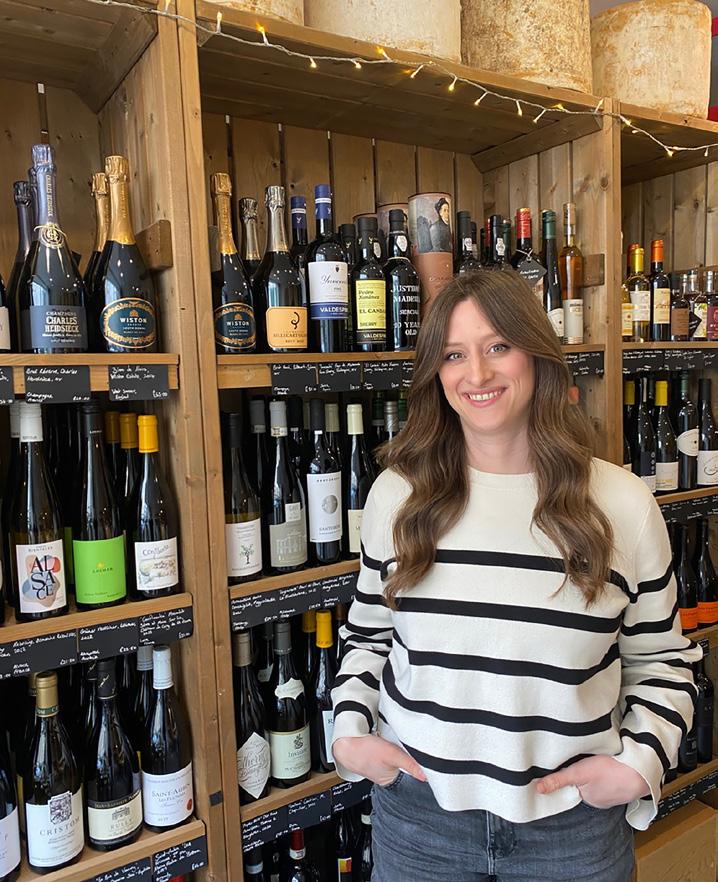
now gone back to buying and sourcing our own wine,” says Wright. “It’s something we’re expanding on because I think the area is really missing a wine shop.”
Buchanans sources wines from suppliers including Liberty, Armit and Bibendum.
“People know us for our expertise in cheese, but we also have in-house expertise in wine,” says Wright.
“We take the same approach to selecting wine as we do our cheese. On a very basic level we always ask ourselves the question, ‘is it delicious?’ But above and beyond that, we enjoy finding wines from producers that share our values in terms of quality.
“We’re also keen to champion wineries that have sustainability in mind. I’d say our range is designed to offer some great examples of classic wines as well as interesting bottles perhaps from lesserknown regions or grape varieties.”
Phoenix Wines in Cirencester is back in business after a temporary closure. Due to landlord issues as reported in the February 2023 edition of The Wine Merchant, Simon Griffiths had to move out of his premises on Castle Street.
He got the keys to a new site, about 100 yards away from the original shop, in November. “We’re sort of half up and running,” says Griffiths. “We were able to open for Christmas on temporary event notices and we’re currently open one day a week, still on temporary event notices because we’ve got the usual hassle of dealing with the council.”
While Griffiths says some of his customers know he’s reopened, he’s not been focusing on getting the word out just yet. “Until the premises licence is through and we’re open consistently, I don’t want to share too much about the fact we’re back unless people know the legitimate reasons why we’re not open every day,” he says.



There’s a trade-off to attending trade tastings – and a lot of frogs to kiss
Iused to go to tastings quite a lot. Then Covid hit and the idea of sitting on a train then mingling and spitting didn’t appeal.
Immediately post Covid, I didn’t like the idea of having to book a socially distanced time slot. If I catch a train at a more or less civilised time (off peak), sit on it for two hours and then stroll across the city, I’m unlikely to get there much before lunch. I like to take my time and have a few breaks. All of this means that I haven’t been to more than a couple of tastings in the past three or four years. This spring I did three in the space of four weeks.
The first London one was hosted by a company I’d been buying from for many years. We list a few wines which have regular, repeat customers, and a few esoteric ones that are nice to have. Hitting the minimum order for regular pricing, if we run out of a regular line, is not always easy. The solution was to go to their portfolio tasting and add a few more.
It was an enjoyable day and we listed five wines out of the 60 or so we tasted from the 750 on show. Not a bad hit rate, but here’s the first issue: there were 690 wines we never got to try. I took daughter and codirector, Alice, with me. Maybe we should have split up but it’s good to share notes as you go. I’m at an age where I can barely hear when there is background noise, so a spare pair of ears is also good.
We made a plan while we had lunch, five minutes after arriving. We have a much bigger range of reds than whites at the moment and our range is a bit light in
non-classic whites, so we started in Greece. We skipped the reds, intending to do them on a return run, but failed. What I hadn’t initially noticed was that there were 29 Greek whites – well, 28 if you avoid the retsina, which we did. Like Dragons’ Den contestants talking to the wall, we made our notes over the spittoon, away from the gaze of the proud producers.
That’s the next issue. I can never read my notes afterwards. Not because I forget to spit, but because I can’t write standing up. I especially can’t write in a winespattered booklet while holding a glass and standing up. This means that I quickly revert to ticks and crosses rather than comprehensive tasting notes. Looking at my contemporaneous notes on the train, I had written “Tooch or lychee swetnos, Gewurz~~er – them lemin frishnoshh”. The wine is now on the shelf with a note saying: “A blend of Malagousia, which adds Gewürztraminer-style lychee fruit, and Assyrtiko, lending lemon freshness to the finish.” Alice’s notes were evidently clearer.

Having exhausted the Greeks, and the Greeks having almost exhausted us, we set about looking for other gaps. I’ve never been a big fan of South Africa but we needed some more in our offering. The first we tried ticked most of the boxes and received a tick in return. We then tried and rejected another 20 or so before returning to the original one. A lot of frogs kissed, one African prince found, and time was beginning to run out.
The last hour of any portfolio tasting is a panic to rush around and see what you have missed. I tend to waste it being seduced by ludicrously expensive dessert wines and adding to our ludicrously extensive sticky range. Alice dragged me away and we stumbled upon an interesting Portuguese white from Palmela. It is Fernão Pires with a touch of Arinto and we both, independently, declared it fresh and peachy with a lively apricot finish – at least I think that’s what I wrote. Like a lot of Portuguese wines, it looked like good value, too.
Here’s the third issue. Suppliers with mixed on and off-trade customers show on-trade prices at mixed tastings. I guess because restaurants have a habit of going bust, they are charged more. For a quick retail estimate I double the cost and round it down a bit. Obviously that only works if the price you are being shown is the price you will be charged.
The Portuguese white was pretty good for £14/£15 and really good for £10/£11, so the next day, seeing the real price, I added a couple of cases to the order. I may have used the wrong product code because we ended up with the red.
Back in the shop it struck me that it’s all about accounting for costs. If I don’t hit the ten dozen drop, we get charged 25p a bottle extra. For, say, seven cases that’s a £21 margin loss, and that rankles. Station parking, two day-returns to London and something to eat near Waterloo cost us around £180. But that’s just an on-cost. If I costed the wine at “agency price” and put the £21 surcharge in as a random on-cost we’d be around £160 better off. Sometimes you need a day out, though. We are doing it again next week.

TRIED & TESTED
Roter Veltliner sounds like a nightmare to work with and so when growers persist with it, as a few do in Wagram, Lower Austria, it must be with good reason. And here’s the proof: a gorgeous, generous, spontaneously fermented wine with a faint caramel undercurrent and an abundance of peaches and herbs. Doing well in the indie trade, we’re told. Well, of course.
RRP: £19.50 ABV: 12% Delibo Wines (01993 886644) delibo.co.uk
Ribera del Duero could once have been accused of making wines that were easier to admire than to drink. But thanks to winemakers like Almudena Alberca, Spain’s first female MW, things have been changing. Yes, there’s some muscle, and the flavours go dark and deep. But fresh red fruit is to the fore.
RRP: £20.99 ABV: 14%
North South Wines (01442 870900) northsouthwines.co.uk
Alliance presented a number of great-value wines in the “Fundamentals” section of its London tasting. This Colombard/Ugni Blanc blend from Gascony is just one example: simple and mellow, with apple and pear characters, zippy acidity and a saline smack on the finish. An easy sell, you would think, at this price.
RRP: £8.99 ABV: 11%
Alliance Wine (01505 506060) alliancewine.com
This 100% Negroamaro from Puglia pulls no punches, but its intensity is cleverly channelled. If all the winemaker had wanted was a fiery blockbuster, the alcohol would be at least a point higher. Instead, we find a delicacy and balance to the swirling date, liquorice and spice components.
RRP: £14.99 ABV: 13.5%
Buckingham Schenk (01753 521336) buckingham-schenk.co.uk




This Gewürztraminer-led blend comes from Great Southern in Western Australia, and it’s the variety’s sweet and floral aromas that make the first impression. But there’s also a more citrus element, presumably from the Riesling, and rounded fruit from the Pinot Blanc. Happy, harmonious and assured.
RRP: £15.24 ABV: 12.5%
Hatch Mansfield (01344 871800) hatchmansfield.com
IGP Pays d’Oc Syrah is a style that can argue its case for a spot on almost any specialist merchant’s list, offering, as it usually does, opulent fruit at an eyecatching price. Here we find both those things, with spice and violets too, and a freshness that tempts you to follow the maker’s advice to serve it slightly chilled.
RRP: £13.99 ABV: 14%
Mentzendorff (020 7840 3600) mentzendorff.co.uk
Grillo really deserves more recognition from the wine-buying public, especially when you get as much bang for your buck as you find in this Sicilian example. There are layers of complexity and a lovely texture, with citrus, green apple and floral notes vying for attention, and a satisfying mineral kick to the finish.
RRP: £12.75 ABV: 12.5% Hallgarten & Novum Wines (01582 722538) hnwines.co.uk
Langmeil’s first single-vineyard expression from Barossa’s Eden Valley comes from a high-altitude site with virtually no topsoil, where the fruit ripens later. It seems to contribute to the perfume and ethereal nature of the wine, but there’s a robust side to its character too, with the dark berry fruit sprinkled with spice and a subtle seam of vanilla.
RRP: £96.27 ABV: 14.5%
Berkmann Wine Cellars (020 7609 4711) berkmann.co.uk





Over recent decades, Chenin Blanc has become synonymous with South Africa’s top wine offerings. The country has the world’s most extensive plantings of this variety and it remains South Africa’s most widely planted wine grape.
Chenin Blanc has a riveting flavour spectrum, ranging from lean, mineral-led wines to oak-matured golden beauties of enormous depth and complexity. The old vines which flourish in the Cape allow wineries to add further gravitas and distinction to their Chenin Blanc wines.
In South Africa, the official Old Vine Project certifies vineyards of 35 years and older as Heritage Vines, with over half of the country’s 4,292 hectares of official old vines being Chenin Blanc.
“As a leading winery in Stellenbosch, with a profound focus on Chenin Blanc wines, Kleine Zalze values the tradition of old-vine Chenin Blanc and has made this an important part of our portfolio,” says general manager Carina Gous. “In fact, of the 558 hectares of old-vine Chenin Blanc found in Stellenbosch, Kleine Zalze manages 95 hectares, making us the largest producer of Stellenbosch Heritage Vineyard Chenin Blanc in the country.”
These vineyards are mainly planted on granite soils in the sub-regions of Faure, Bottelary and Devon Valley. Most are
unirrigated bush vines: hardy old plants that have, over decades, perfected the expression of their distinctive terroir.
According to Kleine Zalze cellarmaster RJ Botha, “there are two ways of recognising the allure of old-vine Chenin Blanc”.
“On the one side there is the attraction that each vineyard has a story to tell. These are old, gnarled vineyards growing on tough granite soils that have, for over three decades, been exposed to stormy winters, breezy springs and sun-drenched summers.
“Through age they have become a part of the soils and their environment, capable of truly expressing the world in which they have lived – which we on the outside call terroir. These are vineyards commanding respect.”
He adds: “Old-vine Chenin Blanc vineyards express the varietal character and terroir more vividly than younger vines do, it’s as simple as that. You see

it in the tight bunches of small berries. The juice spreads its intoxicating aroma through the cellar at harvest time. And the balance between sugar and acid is tense, almost electric, leading to wines of multilayered complexity.”
Studies done by the Old Vine Project have shown that wines from old vineyards have discernible differences to younger wines, mainly in terms of concentration, texture and length.
“No one says old vines make better wines, but that the wines have their own personality and individual fingerprint. This is non-negotiable,” says Botha.
Kleine Zalze’s old-vineyard Chenin Blanc finds its way into three wines in the portfolio. The critically acclaimed Family Reserve and Vineyard Selection Chenin Blancs are led by old-vine fruit. In addition, the two Chenin Blancs in Kleine Zalze’s experimental range of Project Z wines rely on grapes from these mature vineyards.
“The tradition of old-vine Chenin Blanc at Kleine Zalze is carried through to vinification,” says Botha. “Maturation in French oak casks as well as in terracotta amphorae amplifies the gravitas of the wines from these majestic vineyards, and further underscores our respect for making wines from these heritage vineyards and contributing to South Africa’s wine legacy.”


Taking early retirement from a career in PR, Dan found there was only so much time he could spend at the gym, so he’s fully embraced a funfilled role at Vineyards.
Sadie Wilkins, who owns the hybrid wine shop with her wife Hannah, says: “Dan is a superstar and we’re absolutely delighted to have him on board. He’s our ontrade manager, taking the lead on the drink-in menu and playing a key role in sourcing the wines that are on by the glass.
“Dan’s a big foodie, an incredible cook and he is very strong on his food pairing suggestions. He’s also fantastic at making cocktails and he’s really broadened our spirits list. We have people travelling miles to come and have a drink here rather than at their local. We fill out every weekend and I’m absolutely certain that has a lot to do with Dan, his hospitality, his warmth and his passion for food and drink. We call him our hostess with the mostest and he’s a great asset to us.”
Dan joined the team last October and, having been a long-standing customer at Vineyards, immediately felt at home. Add to that his natural aptitude for hospitality –“my father became a publican once he’d retired and had loads of pubs, so I grew up in that sort of environment” –and it’s no surprise that the Weekend Club was introduced soon after his arrival.
“From about 4pm on a Friday we have some really chilled music going on and we do wine by the glass and I make cocktails,” explains Dan. “It’s just a good buzz until
we close at 9pm, which is a nice sensible time.
“The other part of the Weekend Club is on a Saturday morning when Hannah and I open up at 9am. We have amazing fresh bread from an artisan bakery, and we serve fresh coffee and pastries along with glasses of Champagne, Buck’s Fizz, and Bloody Marys – or our version, which is a Bloody Hail Mary. I have a secret ingredient for that to make it smoky. So we see lots of people who’ll come on the Friday night, and pop in on Saturday morning for breakfast too.”
Aside from the regular in-house training, Dan is soon to embark on his formal WSET journey, and he’s looking forward to it.
“It may be a laugh a minute here, and very social,” he says, “but I am working with experts, which is great. Hannah and Sadie are very inspirational. Their wine knowledge is astounding and it makes you want to get to that level.”
Dan wins a bottle of Cartuxa Tinto Reserva courtesy of Mentzendorff
If you’d like to nominate a Rising Star, email claire@winemerchantmag.com



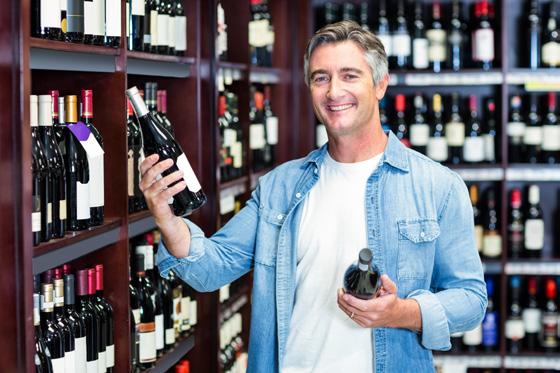
I'm the head of quality control and enforcement here at the Wine Marketing Board.
My job is to randomly select bottles from your shelves, take them away and make sure they taste as they're supposed to. I won't pay for them and I don't need a receipt.
Fun fact: my favourite wine is Joseph Drouhin Grands Echézeaux 2014. So more often than not I'll begin my visit in the Burgundy section! I love my job.

customers we could do without

… and you’ll find this hilarious, when we were pouring the Chablis, this jumped-up woman, vice president of global marketing or whatever the hell she is, goes, oh yes, this is much more like it, on my table someone offered me a bloody Chardonnay! Can you believe it? All that international travel and fine dining and she still doesn’t have the most basic understanding of wine ... we all know that Chablis is a Chardonnay, you pretty much learn that stuff at kindergarten ... actually there were some really super bottles at the awards bash, I know one was a Rioja, or perhaps it was another grape, but I can’t remember where it came from … Chile, maybe? Oh and a fabulous Rhône Riesling, a Marlborough Cabernet Sauvignon Blanc, and a beautiful Italian wine beginning with B … it’ll come to me … Bar? … Barb? … Baro? … Barossa! Pretty sure it was a Barossa. Don’t you agree Italians are the best?
1. Who owns the Justerini & Brooks wine merchant in London?
2. In which region of Spain would you find Ribeira Sacra and Valdeorras?
3. What do the wine producers Blackbook, London Cru and Gutter & Stars have in common?
4. What’s the name of the fining agent derived from fish bladders?
5. Although he disparages Merlot in the film Sideways, what turns out to be Miles’s most treasured wine?
Answers on page 54





In a nutshell: Make your shop the go-to place for wine education and your staff, customers and local hospitality businesses might thank you.
Tell us more.
“Like many shops, we take on WSET because, especially at Level 2, you’ll find loads of customers who are just a little bit more wine curious, wanting to formalise their wine education or to get a little bit more out of wine, by taking a course. This September will be the first time we will run the Level 3 and, while were thinking that it probably wouldn’t be for the vast majority of our customers, we have had demand for it from people who have either done Level 2, with us or elsewhere, and they really can’t get access to Level 3 easily in the south west.”
What about your staff?
“We have an amazing shop assistant, James, who is helping with the marketing for this course, and as he’s ready to do his Level 3, it’s much better for him to do it here in our own venue than go to London. We also have lots of hospitality people from around Bath come to us and I love that people from other restaurants are coming to our place to learn about wine. There’s lots of benefits in terms of community, like the way that people feel about our business if we can run these courses.”
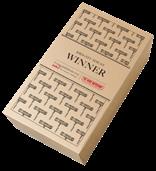



Who teaches the course?
“We’ve been working with Alex Stevenson from The Drink School for the last two years. He’s really great. He’ll come to us to teach Level 3 over five consecutive Mondays, then we’ll have a break week and then the exam. I think we’ll get some people back in who did their Level 2 here with Alex. It would be really good to see that continuity.”
Where do you host the lessons? Do you have enough space?
“What’s good about our building is that we are closed on Sundays and Mondays, so that’s when we are able to hold the course. We’ve run the Level 2 courses in the bistro and we put a little projector screen up, but I thought we might do Level 3 in the wine shop because it’s really nice to study amongst the bottles in a room that celebrates wine.”
Is this a money-making exercise or do you do it for other reasons?
“We did it initially because we want to be a hub for wine. We’re not trying to make lots of money from the courses, we just want them to be successful. We definitely cover our costs and by running them in our own venue we are able to put our staff on a course for less than it would cost if we were sending them out. So we’re kind of saving money!”
Travis wins a WBC gift box containing some premium drinks and a box of chocolates.
Tell us about a bright idea that’s worked for you and you too could win a prize.
Email claire@winemerchantmag.com
 Eliza Parkes Yardarm
Eliza Parkes Yardarm
Leyton, east London
Favourite wine on my list
It changes all the time. We had Madame Flöck Schmetterling Riesling/Müller-Thurgau from Mosel, Germany, the other day and remembered how great it is.
Favourite wine and food match Sauternes and custard cream biscuits. This is the best way to illustrate how to pair puddings to sweet wine without employing a pastry chef.
Favourite wine trip
Most recently to Limeburn Hill near Bristol. Robin and Georgina’s biodynamic vineyard is a place of beauty and hope.
Favourite wine trade person
There are so many to choose from! I love catching up with the guys from Provisions (north London). They have such great wines and know the industry and hospitality so well that we end up just chatting.
Favourite wine shop
Mounts Bay Wine Co in Penzance. This was the first ever wine shop I went in as a kid and only on very special occasions. I loved the corks in the window and the wide counter covered with tissue paper for the bottles.
Pernod Ricard plans to bolster its Provence rosé portfolio by acquiring the Aux Terres de Ravel estate.
In 2022, the French conglomerate became the majority shareholder in Côtes de-Provence producer Château Sainte Marguerite, responsible for wines such as Symphonie, Fantastique and Marguerite en Provence.
The deal to snap up Aux Terres de Ravel, which is located approximately 15km north of Château Sainte Marguerite, is expected to be completed this summer.
Decanter, April 23

The final part of the Avery family’s historic wine collection will be auctioned by Christie’s in June and is set to include a single bottle of Château d’Yquem from the legendary 1921 vintage.
Richard Avery said: “For over a century my father and grandfather have amassed this incredible collection of truly global wines. But these wines have now outlived two generations and it would be a disservice to the incredible winemakers to push it to a third. Instead, we want to release them back into the wild for the next generation of enthusiasts and producers to enjoy and be inspired by.”
Decanter, April 25

Château Batailley has become the first estate out of the gate for the 2023 en primeur, releasing the 2023 vintage at a price 11.9% lower than its 2022.
The 2023 vintage has been released at €26 per bottle ex-négociant, compared to €29.50 last year, and is being offered by the international trade for £324 per case of 12, compared to 2022’s opening price of £372 a case.
The decrease put it roughly on a par with the release of the 91-93+ point scoring 2021 and the 93-95 points 2020 release, which were in fact a fraction higher at €26.50, and sold by the international trade for £330 per case of 12.
The Drinks Business, April 29

Napa Valley’s wineries have launched a revolt against “abusive” county officials, accusing bureaucrats of killing the region’s vineyards with absurd and excessive red tape.
Vintners say they are being “crushed” by “gross regulatory overreach”, which has included penalising wineries for planting trees, making jam and conducting wine tastings on their own land.
Napa is the only wine-growing region in the world that does not allow weddings, and vineyards are restricted in their ability to profit from food sales or sell products other than wine.
Daily Mail, April 28
Freixenet is to furlough 80% of its workers in Catalonia, as the region struggles with a drought that has lasted more than three years and severely affected grape production.
“The furlough is an exceptional measure that has been taken in the context of a crisis brought about by a lack of raw materials because of the harsh drought since 2021, which hit the El Penedès area particularly hard in 2023,” the company said.
The Guardian, April 23
• Majestic has bought the Vagabond Wines brand and nine of its 12 bars out of administration. Vagabond’s two Gatwick Airport sites and its bar in Canary Wharf were not included in the acquisition.
The Grocer, April 5
An Italian restaurant is offering a free bottle of wine to customers who relinquish their phones during meals.
Angelo Lella, owner of Al Condominio in Verona, said the aim was to encourage diners to chat to each other instead of constantly glancing at their phones.
“The response has been very positive,” he says. “Ninety per cent of customers have opted to leave aside their phones in exchange for wine. It really is a beautiful thing to see people embracing it.”
The Guardian, April 15




�I recently hosted an Italian tasting and one of our guests said, ‘I don’t like red wine’. When I asked her what she didn’t like about it, she replied, ‘it’s too dry’. ‘Oh, so you don’t like heavy tannin in your red wine,’ I gently pointed out. She tasted a Chianti and a Pinot Noir and now she loves red wine, just the lighter styles. There is something for everyone, it’s just about being open and giving consumers the knowledge to choose what they will like, rather than there being a right or wrong.”
Abbi Moreno Flora Fine Wines, west London�The customer may not always be right, but they’re always the customer; this is what I remind myself most days. Regardless of whether they are asking for ‘a wine that doesn't give them a headache’ or ‘a wine that pairs with a Sandra Bullock movie’ (true story), we need to remember that we are here to serve them and give them the best possible answer with a cheery smile, and do our best not to say, ‘dear god, what is wrong with you?’”
Peter Sherry H Champagne winner H
The Beerhive, Edinburgh



�I am inclined to say that a customer is never wrong. Maybe just confused on the odd occasion. We have the age-old issues like ‘I don’t like Chardonnay but I love Chablis’. In this instance we smile and wave. I have, however, been asked for a pound of mincemeat before, which we don’t sell. When I explained this, the customer’s response was, “OK, I’ll take a punnet of strawberries instead then please.” I’m not sure if they were on the wind-up or, as I said earlier, just very confused.”
Dafydd Morris Cheers, Swansea
�I would say that the customer is always right and it’s our responsibility to pass on our knowledge in every situation, even if we feel that there is a conflicting view coming our way. It’s worth spending as long as it takes with each customer to make sure they are informed properly, and I would expect the same from someone else. Working with minimal intervention wines, I often have customers who are wrongly informed about sulphites, so I have quite good experience in diplomatically explaining the facts without making them feel upset if they are wrong.”
Dan Long, Dan’s, north London Champagne Gosset
The oldest wine house in Champagne: Äy 1584
Champagne Gosset
The oldest wine house in Champagne: Äy 1584


Save money on Wine Corner’s Chilla 2.0 bottle coolers – and maybe on your electricity bills too
Wine Corner has unveiled a device which can chill up to three wine bottles from room temperature in as little as five minutes.

May brings major new music releases from Billie Eilish, Kings of Leon and Paul Weller. But my choice is from punk-folk hero Frank Turner. Frank and his band The Sleeping Souls have been part of my life since I first heard his anthem Photosynthesis in 2008, with its opening line “Well I guess I should confess / that I am starting to get old / all the latest music fads all passed me by and left me cold”, resonating 10 years before I decided to open a record shop and had to get my head back in the game. The chorus of “and I won’t sit down, and I won’t shut up / and most of all I will not grow up” still holds true after leaving the corporate world behind, and some would say maybe that’s why it had to happen. Now a resident of Mersea, just down the road from Manningtree, Frank has been mentoring new bands including Wilswood Buoys (who have played Winyl events a couple of times) and has moved away from a major label, recording and producing his 10th album Undefeated in his home studio. Frank has tried to create a narrative flow to move away from the random shuffle culture of streaming and spent a lot of time creating a story, including a last-minute track order change just as the record was going to press. Opener Do One sets the tone of rebellious, rousing, sometimes angry songs and kicks off a record about survival and defiance, but also one with a sense of fun and selfdeprecation. The title refers to raising a middle finger to everyone who says “you can’t do that”. But life is short and it’s mine to live, so I can. A bit like opening a wine and record shop?
Steve Tattam is owner of Winyl, a wine and record shop in Manningtree, Essex
The company says its counter-top Chilla 2.0 is an energy-efficient alternative to large fridges – and it’s offering discounts to Wine Merchant readers.
The device can accommodate magnums as well as standard bottles, with individual timers and calibrated sensors in each pocket managing the cooling process so that every bottle is cooled to the ideal tasting temperature.
Using a blend of water and food-grade glycol within its internal tank, Chilla 2.0 can achieve temperatures as low as -35˚C.
Irwen Martin (pictured), co-founder and managing director of the family business, says: “The Chilla 2.0 is an appliance that helps creative and proactive individuals in the world of hospitality up their game in terms of exceptional customer service.”
Wine Corner is offering two limited-time discounts for readers of The Wine Merchant.

• A 10% discount on all Wine Corner products paid for prior to June 30 • Pay a £150 fully deductible deposit to freeze quote prices issued before June 30, 2024 for 12 months.
Merchants are invited to call Irwen direct on 01302 744916.
“We are accessible,” he says. “We are a resource of straight-talking advice, where customers can talk to engineers and tap into our depth of knowledge and experience, free of charge. We know that all our commissions are unique and individual; we are serving niche clients with exclusive products, equipment and solutions.”




Get your EPR paperwork in Defra’s deadline for businesses to enrol for Extended Producer Responsibility (EPR) and report their packaging data is looming. Paperwork needs to be in by May 31 to avoid a fine. Companies will only need to act if their annual turnover is £1m or more and they were responsible for more than 25 tonnes of packaging in 2022. Businesses with a turnover between £1m and £2m will need to record their data, and begin reporting, annually, from 2025. You can either submit your own data on the gov.uk website, or hire a certified compliance partner (check the Environment Agency website) to do this for you. Defra has yet to publish the fees associated with EPR. But they are expected to be significant.
Could you be an HMRC guinea pig?
Border processes, and rules for holding and moving excise goods, are changing. HMRC is digitising and streamlining authorisations, as well as simplifying warehousing and accounting for duty. The changes will be implemented over the next six to 12 months, so look out for updates. HMRC wants to talk to users of its systems who interact infrequently and work with low volumes, as the changes need to work for those traders too. Please contact david@wsta.co.uk if you are happy to speak to HMRC researchers and test its new processes.
The WSTA continues to campaign for the government to make the easement for wine duty permanent and scrap plans to tax all wines by strength from February next year. For more information, visit the campaign hub at wsta.co.uk. Please share campaign stories and videos on our social platforms.
Digital proof-of-age is coming
As things stand, anyone buying alcohol in the UK is not allowed to use a digital device to prove they are over 18. This may all be about to change. To encourage efforts to develop new technology to improve age verification on restricted products, the government has been testing new digital systems. We are continuing to liaise with government on how best to use technology in the sale of alcohol.

At a time when many indies are nervous about importing wine from a comparative stone’s throw away over the Channel, Sunny Hodge at Diogenes the Dog in south London is busy shipping wine from the South China Sea. Hodge proudly claims to be the first wine importer in Europe to bring in wine from Taiwan.
Having heard from wine writer and educator Leona De Pasquale about the projects happening in Taiwan, Hodge set up a meeting with Vivian Yang, the winemaker at Weightstone Winery.
“Vivian swung by on her way to the Paris wine fair,” says Hodge “and we tasted her full range for the first time at Diogenes the Dog. It was all superbly premium, clean and well-made stuff; truly impressive.
“We take WE No 4. It’s a white blend of Golden Muscat, Musann Blanc and Mehone. On the nose it’s full-on tropical fruit and melon, truly opulent and round but still crisp and defined. The palate is a little more subtle: bone dry, but with real volume and viscosity. I can’t get my head around how this texture has come about as there’s no lees stirring, no residual sugar, and the abv isn’t too high.
“It’s truly wonderful, and many guests
have tried a glass at the bar and soon after taken a bottle home.”
Winemakers in Taiwan cope with extreme environmental pressures such as typhoons and high rainfall. Yang says that Weightstone continues to experiment with harvest timings and varieties.
“We grow local hybrids and the advantage is that they have adapted to the weather better than vinifera, which we are unable to import due to quarantine regulations,” she says.
“The hybrids are more tolerant to mildew but very sensitive to a local strain of botrytis called late ripe rot, which will kick in after veraison, when the sugars start to accumulate.
“This begins in mid to late May, and as July starts to pose a typhoon risk, most farmers pick grapes in June. But we try to hang the fruits longer and accept the lower yield so that we can get more flavour. Nevertheless, we still have to pick in July before they all rot out. Consequently, Weightstone wines are delicate with compact fruit expressions from nose to palate, and a lingering, lightly saline finish that will pair with food easily.”
For Rhône and Provence négociant Famille Ravoire, successful winemaking is all about getting the balance right
Wines are available through Les Producteurs et Vignerons de France
Balance is a guiding benchmark for négociant Famille Ravoire in all stages of the winemaking process. Marketing director Alexandra Parfus references the importance of choices in grape selection, ageing and blending in achieving balance for all the wines it makes in the Rhône Valley and Provence.
The company exports to more than 50 countries and it’s Provence’s famous rosés that provide the main focus in the UK market, where its sells Soleil des Alpes IGP Alpes de Haute Provence and Costeval AOP Coteaux d’Aix en Provence rosé through Les Producteurs et Vignerons de France.
“Drawing upon our knowledge of the vineyards and their winegrowers, and the hundreds of tastings we carry out throughout the year, we strive to identify the best plots of land,” Alexandra says.
“The aim is to obtain optimum grape maturity, the greatest concentration of aromas in the berries and the expression of terroir that is faithful to the appellation, with the ultimate aim of achieving balance.”
The level of involvement of winemaker Pierre Vieillescazes and his team in partnerships with growers runs deep and long, from daily observations of conditions during the growing season, through monitoring the impact on the environment, to tasting grapes to determine picking dates.
“We supervise the winemaking process carefully, visiting our partner wineries several times a week, or even daily,” says Alexandra.
Ageing is done in a combination of stainless steel and concrete vats, plus oak casks, demi-muid barrels and tuns,
with the role of each determined by the requirements of each vintage and the style that’s ultimately being sought.
“There is no predefined recipe,” says Alexandra. “It must allow the wine to blossom, develop complex aromas and gain in supple smoothness, while preserving the freshness and elegance so vital to the balance of the final blend.
“Each vinification is different from the last, calling for a constantly open mind and making each vat a special case which will require its own individual treatment.”
The final quest for balance comes with the blending, “a final touch that lasts for hours, sometimes days,” adds Alexandra, “and consists of seeking the optimal harmony between the freshness of one grape variety and the power of another, the elegance of one barrel and the concentration of another.”
In addition to the quest for harmony in its wines, Famille Ravoire wants to make
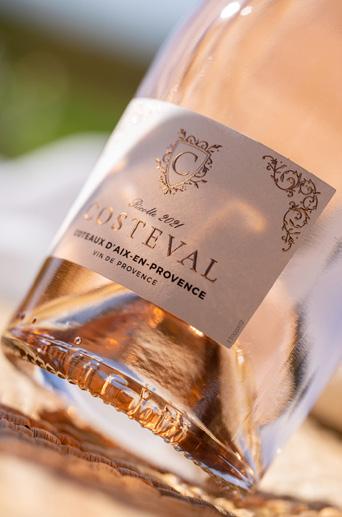
Costeval
sure its impact on the planet is minimal and that it conducts business in a socially responsible way.
It’s produced wine ranges with reusable glass bottles and installed enough solar panels on the roof of its property in Provence to supply 45% of its energy needs.
Ravoire is also a member of Vignerons Engagés, an association to promote sustainability in winemaking, and is applying for B Corp certification.
The quest for sustainability is led by Olivier Ravoire, the head of a team that is, Alexandra says, “united and involved throughout the production process”, echoing the quest for harmony in its wines.


Our customers are up to speed with news, fashion and music. Why not wine?
One of our restaurant customers asked us to add an orange wine to their list this month. “So what?” you ask. “Why’s that worth mentioning?” Because, I reply, it’s the first orange wine on any wine list in Orkney, ever. The ripples of wine fashion do reach us, but it can take a while. Drop a stone in a pond of skincontact wine in London and it’ll probably be five years before amber wavelets reach our shores.
We supply about a dozen restaurants, pubs and bistros, which is not all the licensed eateries on the islands, but all the good ones. To keep their lists fresh, we attend as many tastings as we can in the spring and autumn, and beg for a few samples to be posted to us. Sales reps don’t venture this far, which makes us feel we’re missing out, though judging by occasional comments in these pages, what we’re mostly missing is pushy individuals turning up at inopportune moments. So maybe I should forget my rep FOMO.
The on-trade market here is small. The resident population is 22,000, and though tourism is important in the summer months, it’s not of Cornwall or Edinburgh proportions. There aren’t floods of sophisticated wine drinkers pouring through the dining rooms of Orkney; those with drinks knowledge are more likely to
At last, someone has taken up our suggestion of an orange wine
be here for Highland Park or Scapa whisky than wine. Which is quite understandable. But I’m not going to let stolid disinterest grind me down: I’m going to ensure the wines served are interesting and of good quality, whether anyone cares or not.
Don’t the restaurateurs themselves take an interest in their wine lists? Only one or two: most are too occupied with the challenges of finding staff, and devising profitable menus in the face of rising food costs. I think one reason our service is appreciated is because we save them from having to take an interest. We bring the wines in from faraway places like France and England, we match them to different restaurants’ cooking style and clientele, we write their lists, we train their staff (or try to: “Are you getting any aromas from this Chablis?”
“I’m getting bleach”) and we hold copious quantities of stock and make same-day deliveries so they don’t have to wait 10 days to get a delivery from LCB.
Imoved on much since their days at catering college 20 years ago. So they sincerely feel there’d be uproar if they dropped their Pinot Grigio, and that Argentinian Malbec is a risky novelty.
Of course they know their own customers better than I do. Though it has to be said, I know their customers pretty darn well, because they come into my shop. With the right conversation, and an appropriate level of enthusiasm, it’s quite easy to convince shoppers to try a South African pet nat or a Uruguayan Marselan. Those same folk would certainly venture beyond Chilean Merlot and Côtes du Rhône in a restaurant, if they had the chance.
Over the years we’ve had some successes. As well or instead of bland Prosecco, several places now list characterful crémants from Alsace or Jura. South Australia might be represented by a juicy Grenache rather than a jammy Shiraz. And now – at last! – someone has taken up our suggestion of an orange wine. It’s really quite exciting.

’m not complaining about their lack of passion for wine: it’s our job to supply that, and I think we do it quite well. What can be trying, however, is getting over the final hurdle of gaining the chefmanager’s approval for their updated list. These folk don’t have a lot of time to read Slop or Decanter, still less to fly 700 miles to visit Maltby Street or Dalston Lane. Usually their knowledge of wine hasn’t
Interestingly, Orcadians are up to the minute when it comes to news, clothes, trending streaming series and Taylor Swift. Why does wine awareness lag so far behind? Could it be the lack of decent coverage in print media and on mainstream TV? No one ever comes into the shop exclaiming: “I was just watching James Martin. He says Marlborough Sauv Blanc is so 2020. Where’s your Marsanne shelf?” Newspaper coverage is mostly brief and restricted – not by the writers’ choice, I’m sure – to a predominant supermarket focus. If we are old fashioned here, it’s because most folk get their wine news the old-fashioned way: by word of mouth. It works well, but it works slowly. Now, if you’ll excuse me, I have to get out on the shop floor and do some talking. There was a big plop in a pond of natural wine in Hackney a few years ago, and I need to tell my customers what’s rippling their way.
DuncanMcLean is proprietor of
Kirkness& Gorie, Kirkwall
Last year’s winner of 31 Days of German Riesling, Paul Morgan of Fourth and Church, talks about the impact of the promotion and why it’s a fixture on his events calendar
Fourth and Church is a hybrid restaurant, bar and shop in Hove, East Sussex. Paul says the monthlong promotion helps to build on his growing local reputation for Riesling.
“We have a big following for Riesling and the more we are involved with 31 Days of German Riesling, the more interest it generates,” he says. “We sell a lot of Riesling anyway and we always have it on by the glass. But for the month of July, it’s massive, and we see a huge uplift in sales.”
So how does the focus of the business change?
First Paul takes stock of what’s in his cellar, setting aside anything “rare or unusual”, before “ramping up” on the buying side.
“I put all of that together to make sure we have a great retail selection, and I make sure we have at least four German Rieslings on our weekly changing by-theglass list,” he says.
Working with his in-house chef, Paul creates pairings for the ticketed events organised as part of the promotion.
“We run tastings which we call Barstool Sessions,” he explains. “We will do at least two or three of those throughout July. We have about 12 people around the bar and we’ll showcase four or five German Rieslings and pair them with small plates.
“We also have the Sunday Session, which is a more elaborate lunch for 36 guests. We’ll pair more top-end German Rieslings with a six-course menu and we’ll
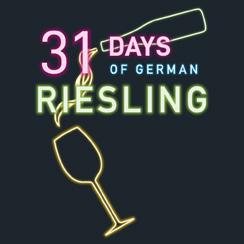

usually have a visiting expert there too.”
Paul ensures he has German Rieslings to suit every pocket with his range starting at £10 a bottle, rising to £200 “and everything in between”.
Riesling is, he argues, a perfect food wine. But he also describes it as “very friendly, with styles that make it easy for
Please read the participant guidelines when signing up. Visit winesofgermany.co.uk or contact germanwine@thisisphipps.com
people just to sit and have a glass”. He adds: “This all affords us the opportunity to talk to people about German Riesling, whether that’s the different levels of dryness, or just explaining some simple things on the label, such as what to look out for and how to articulate what style they like.”

Very slowly, as it transpired. Access to the site was blocked by scaffolding for several months once lockdown started. Vin Santo is in Watergate Street, on the bottom tier of one of Chester’s famous twostory medieval shopping streets that will be familiar to anyone who’s visited the city. A team of specialist conservation carpenters working on a balustrade above the entrance to the store opted to down tools as the first Covid wave struck, putting the premises off-limits.
“I could have done lots of work, like clearing the cellars,” says Simon. “I could even have sold wine because all the licensing was in place. But I couldn’t get physical access to the property.”
Vin Santo eventually opened four months later in the pandemic’s first hokey cokey phase of the ontrade opening and closing again.
simon parkinson adored the 13th-century vault in the heart of chester when he worked there for corks out. As owner of the vin santo business that now holds the lease, he loves it even more. could this be the most atmospheric wine shop in the uk?
by nigel huddlestonSimon Parkinson signed the lease on the premises for Vin Santo, his hybrid store in Chester city centre, on March 13, 2020. Eleven days later, the UK went into lockdown. To rub salt into the wounds, March 24 is Simon’s birthday, and the plugs were pulled by his friends on a surprise party.
“Lots of people ask me why I signed the lease,” he says. “I genuinely had my head in the sand and was convinced that the media were overplaying it. Even when Italy went into lockdown, I just didn’t see it happening here. We were just working hard to get hold of the place and didn’t hear all the noise.
“Of course I wouldn’t have signed if I’d known what was going to happen, but that would have been the biggest mistake,” he adds. “Although it’s been very hard, we have built a successful business. Lockdowns and the subsequent uncertainty meant we had to do things slowly.”
There’s been a wine merchant on the site since 1863. The family-owned Quellyn Roberts occupied the premises until 2007, when it was taken by Ruth and Richard Yates’s highly regarded Corks Out chain.
That business closed the Chester site in 2019 as part of a post-Yates era downsizing exercise. Simon and his current general manager Tom Scargill both worked at the store under Yates, then at another notable Cheshire merchant, Whitmore & White, before Simon decided to do his own thing in the form of Vinological in Chester’s indoor market.
Vin Santo and Vinological traded side by side for a time, but the latter has now closed to give greater focus to Vin Santo, where quirky stuff from eastern Europe rubs up against great names from Bordeaux, Burgundy and elsewhere around the world. The likes of Felton Road, Masi, Ridge, Grange, Unico, Hill of Grace and Tignanello can all be found in the vault-like cellar space – Simon uses the term crypt –parts of which date back to the 13th century.
Was there any point where you considered Watergate Street would be a second branch of Vinological?

I knew that it was going to be a different beast to Vinological, which is one reason I chose to keep Vinological open at first. The customers who went there were very different to the ones who came here. With hindsight I realise that was a mistake. We found if Vin Santo had a busy night, Vinological had a quiet one and vice versa. It became clear we’d
 Duncan Gammie
Duncan Gammie
have to differentiate them even more.
People went to the market for good quality products and service but they didn’t go for the aesthetics of the market itself, so we could be quite rough and ready. Me and my dad built the Vinological bar out of MDF and the cheapest kitchen worktop we could find. But you couldn’t do that in this building.
Why did you decide to close Vinological in the end?
The market moved into a new hall but what they were planning didn’t suit our business model. We moved to a new site a bit further out of the city but it only lasted about nine months. It wasn’t working. It wasn’t bringing in the revenue and was too much of a distraction from Vin Santo.
What was the attraction in coming back to the Watergate Street site as a business owner?
I’d always been passionate about the building. I loved what Corks Out did and was very
“I’d always been passionate about the building. I loved what Corks Out did and was very disappointed to see
it close”
disappointed to see it close. From the moment it did I was in communication with the landlord. I explained that we wanted to do something different from Corks Out but still be a wine merchant. He loved that idea, and from day one I think it’s fair to say I was the only one who was going to get the lease.
What’s the story behind the name?
I wanted to use Vin to have an initial connection with Vinological. Vin Santo means regal wine or holy wine, so it felt right with the building and the history. It helped that it’s Italian because we love Italian wine. It was actually my mum who came up with it. It’s one of her favourite wines.
One thing I really like about the name is that the regulars shorten it to Santo, which I love. You only have nicknames for your favourite places.
What was Corks Out like to work for?
You couldn’t fault Ruth and Richard’s passion for wine and the work they put in. They had some
good people, like Bob McDonald [now at Salut Wines in Manchester].
We had some great wines and the hybrid model meant we got to try almost everything that made it on to the shelves, so there was a genuine knowledge there. We were offered lots of opportunities to go on trips and visit producers.
The thing Corks Out got right was the clear focus on being a wine shop and wine bar first and foremost, so they attracted staff who were really into wine.
It’s very easy to drift into something that you never intended to be, whether that’s pushing cocktails too much or installing draught beer lines. All of a sudden you’re a different business. But Corks Out were very good at staying focused.
With the greatest respect to Ruth, they just overexpanded. They lost sight of the fact that the business was built on fantastic customer service from very knowledgeable staff, and the more you grow the business the more you dilute the control you have. Heswall and Timperley were very much neighbourhood wine shops. Chester is a city centre location with a thriving local scene. Stockton Heath is a neighbourhood wine bar. You can’t really run all those different models in one business because they all have different requirements.
Then there are little things like having to have more focus on the commerciality of the wine rather than what’s interesting or unusual.
Corks Out was big into Enomatics, but you’ve taken them out.
We took the view they weren’t Covid-safe when we opened. We took the decision to only have staff use them, so they were only being used as a wine preservation system. We got rid of them soon after. Customers love them and they had been a big draw, but there were numerous issues. They were expensive to maintain, and we had an issue with people coming in with Corks Out cards. I’m not a bad guy; I really would have liked to honour them, because people had a lot of money on those cards. We were turning numerous people away.
But ultimately it wasn’t the type of service we wanted. We wanted to do table service and sell customers wine by the glass. If a customer has a question, everyone’s tried the wines, so they can talk about them.
One of Simon Parkinson’s first decisions at Vin Santo was to take out the Enomatics

Apart from that, what did you change about the premises?
We changed the colour scheme a little bit, and the furniture. We put in a fine wine cage to push it a bit more. We made it feel lighter and a bit cosier and warmer as well. That’s one of the problems; the building gets so cold. It’s not heated. It keeps a fairly constant temperature but in winter it drops a degree – not a huge amount. But, with the air flow as well, it has the perfect conditions for keeping wine.
Did you change the product offering?
The main thing was getting rid of the Enomatics. We also changed the food. We do a lot of continental cheese and charcuterie, all sliced to order, and so the customers can see us doing it. Corks Out had hot dishes. We wanted to keep it really simple, but really good quality.
“I’m always suspicious when
I see a cheeseboard and it’s loaded up with 10 different things. What am I paying for here?”
Our cheeseboard is cheese, crackers and quince jelly. We don’t really see the need for grapes, olives and celery on a board. I’m always suspicious when you pay for a cheeseboard and it’s loaded up with 10 different things. What am I paying for here? The fact it’s simpler makes it easier but it also means there’s nowhere to hide. It has to be good.
And what about your approach to wine?
We’re not afraid to put expensive wines on by the
glass. Choice is key for us. I know some people shy away from them because they’re worried about the waste or don’t want to be seen as expensive because they’ve got a £50 glass of wine. We try to keep wastage to a minimum by recommending wines to customers, but being honest. We don’t hide the price, but we justify it on the grounds that it is incredible wine.
Is the range all your own work?
It’s pretty much curated by myself and Tom and our passions definitely come through. Tom has a love of Burgundy, and we’ve had some great wines from there. I love Spanish wine. One of my abiding memories from my early days in the wine trade was Vega Sicilia, and the first time I tried Valbuena: I knew I wanted to sell it. I don’t want to shy away from wines because they’re expensive. I want to sell wines because they’re good and Vega Sicilia is the pinnacle of fine Spanish wine. We’ve got a great relationship with Berkmann and we get an allocation and sell it. And because we have those customers we can sell other high-end Spanish wines as well.
What about the bottom end?
The cheapest wine we sell is £11. We could go lower but under £10 isn’t a market we want to be in. It’s difficult to convince consumers that £9 here gets you better quality than £9 in the supermarket,
“Consumers see independent merchants as expensive. So let’s use it to our advantage”
because that wine was marked up at £18 for one day and they’re getting it at half price. At £11, 12 a bottle, though, it’s a lot easier to talk about the quality of the wine.
Consumers see independent wine merchants as expensive. So, if they’re expecting us to be, let’s use it to our advantage. If we sell them really good quality wine at £15 instead of £9 they’re going to go home and enjoy it and see the value of spending £15 on that one bottle.
It’s the same in the bar. I could buy cheaper wine to sell at £4 by the glass. That’s what I’d expect to pay in a pub – but we’re not a pub, we’re a wine bar.
Did you retain wines from Vinological?
We tried to have a clean break early on. Even though we were sharing some suppliers I didn’t want to buy the same wines. We had what we called Santo wines and ’Logical wines. But once we closed Vinological we bought some favourites over. Vintage Roots was an important supplier there and we continue to buy from them. Vinological was always the more unusual French regions rather than Bordeaux and Burgundy, and a lot of organic, natural and orange wine. We always have an orange wine on the Vin Santo list, and in the summer there’ll be two.
Who else is on your radar?
Liberty, ABS, House of Townend, and we do a little bit with Mentzendorff. Les Caves de Pyrene are coming on board. We do a bit with Fells.

Is it just about wine quality with those suppliers or something else?
It’s quality of wine first, but there has to be a broad range so that we can fulfil a number of criteria: countries, grapes, styles and price points. Liberty and Berkmann both have fantastic portfolios covering many countries, with great quality and good value from each. That’s why we find it difficult to work with suppliers that are skewed to a single country, because they just don’t offer the breadth of range that we need. There are plenty of suppliers we’d love to work with, and where we tried one or two wines that we really loved, but minimum orders made it difficult.
Do you have a feel for how many of your current customers are former Corks Out ones?
I don’t think it’s entirely the same base but we definitely have some old regulars. Tom and I were well known in Chester when we worked at Corks
Out. I have one customer who says that in 20 years she’s never changed a hairdresser or a wine merchant. She’s bought wine from me at Corks Out, Whitmore & White and now Vin Santo, because I know what she likes.
Now we’ve, hopefully, moved on from Covid, what are the big challenges facing yourselves and the industry?
Energy costs still. When the initial hike happened you had businesses who were coming out of contracts who had immediate increases. Our price was fixed so initially we didn’t take that massive hit. But our contract expired and the cheapest new one was 60% higher than we were previously paying.
I also sense that people have less disposable income this year. Last year, even though there was this crisis, it felt like a lot of people didn’t feel the effects. People were still spending money and getting one nice bottle rather than two cheaper ones. Now, people definitely have less money and are trimming back what they’re spending. The other thing is climate change. We are struggling to find some classic styles of wine. We’re trying Pouilly-Fumés and Sancerres that taste
“I have one customer who says that in 20 years she’s never changed a hairdresser or a wine merchant”
nothing like Pouilly-Fumés and Sancerres did 10 years ago. Getting good quality well-priced Chablis is difficult but we’ll get round it by finding the quality and value in other countries.
So, given what you were saying about Corks Out perhaps growing too fast, can we rule out seeing more Vin Santos?
I have no plans to open Vin Santo 2.0 in Chester or any other city. What defines Vin Santo is not just the people or the wine, it’s the building as well, and the history and heritage. I’m genuinely not looking.
But as a businessman I might do something that complements it, that has exactly the same customers. I’d love to have a really good deli, but I don’t want to dilute what we do here. If we added a deli to Vin Santo, for every customer who was excited about taking home a really great French cheese we’d lose one who was confused about whether we were a wine shop or a deli.
People come to Vin Santo with absolute confidence that when they spend £15, £20, £30 on a bottle they’re getting something good – because they know Vin Santo is a wine merchants, and we know what we’re doing.
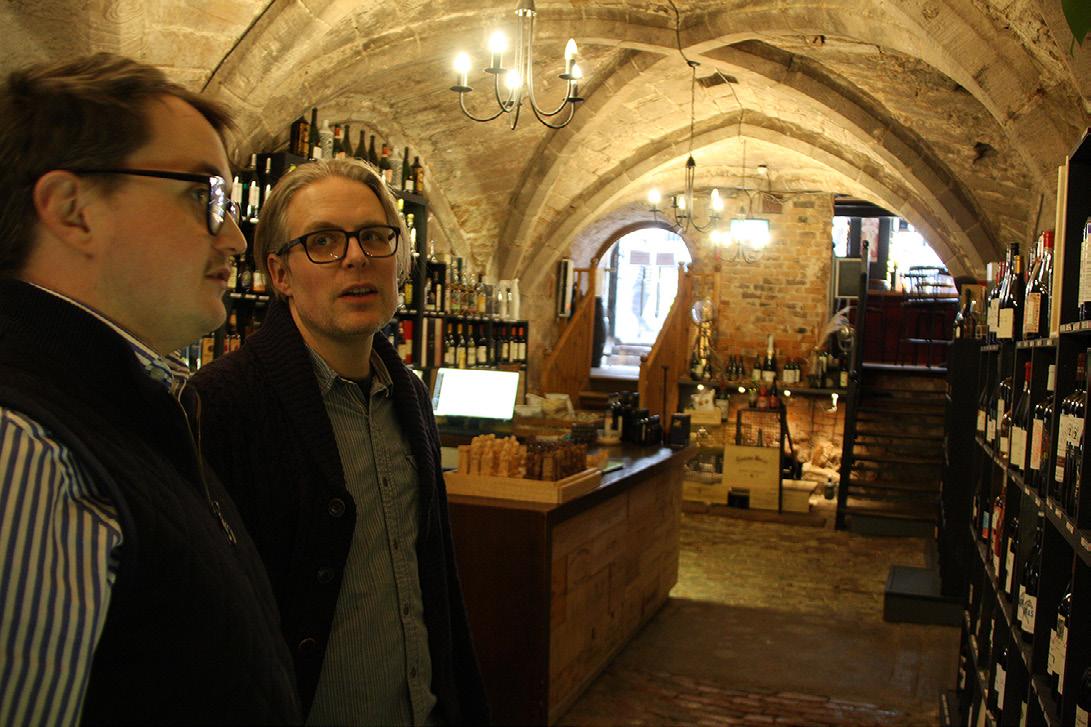
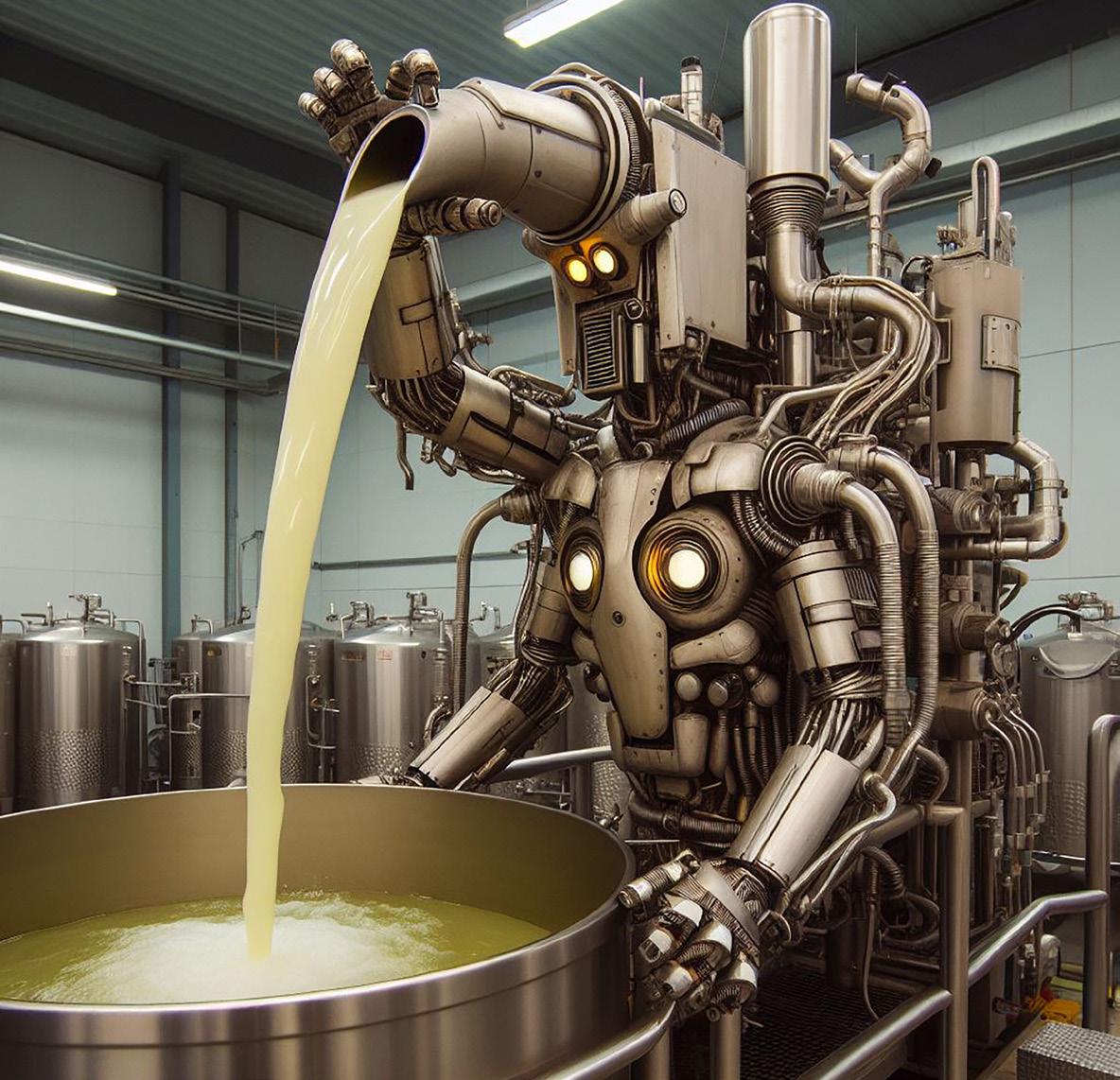
Are wines at 11% abv here to stay?
By Graham HolterIt’s always been possible to find wines at 11% abv. But why so many now? The answer has little to do with oenological trends or public health, and an awful lot to do with pricing.
The government’s reform of alcohol duty has incentivised producers to sell wines at 11%. At this abv, duty per bottle is £2.35. At 11.5%, it jumps to £2.67, and stays at that level all the way up to 14.5%.
The system is on course to change again in February next year, when duty calculations will become almost perversely complicated. Until then, under the terms of what the Treasury calls an “easement”, it makes sound business sense for wine companies to explore what they can offer at 11% abv.
Alliance Wine is among them. According to off-trade sales director Ned Llewellyn, the business has “probably got 20 more SKUs this year at 11% that weren’t previously”. That’s on top of things like German wines and Vinho Verde that have always naturally come in at that sort of level.
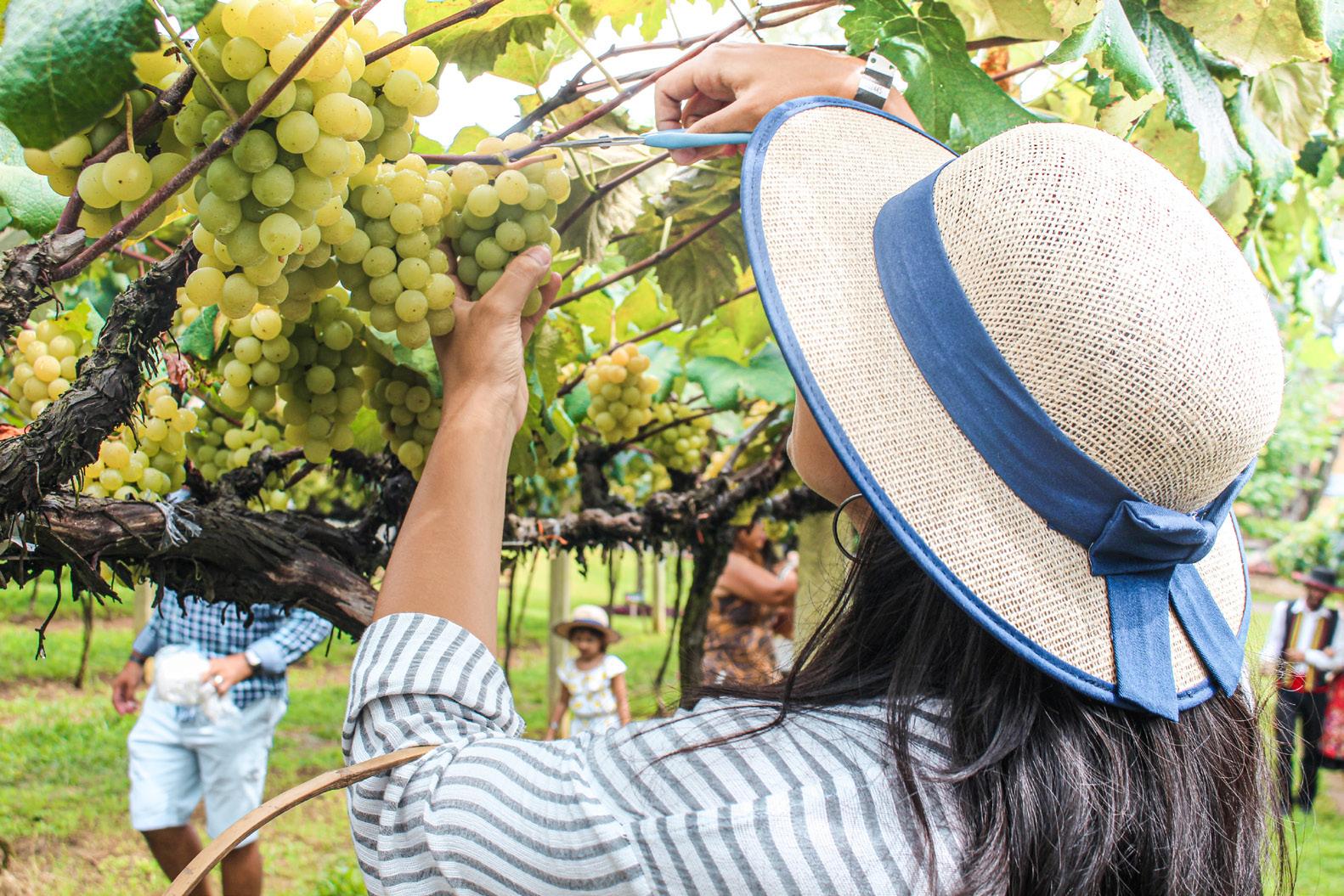
slightly different style. But it’s not wildly different from where it was, to be entirely honest.
Most of the wines that have been engineered to be less alcoholic come from Italy, Spain and France.

Ned Llewellyn, Alliance Wine
“In Italy, we’ve moved our core Pinot Grigio and Pinot Grigio rosé to 11%,” Llewellyn says. “The reality is it’s dropped half a degree in alcohol.
“We tasted lots of different wines at those levels to try and find the right one. Beans [Boughton MW], our Italian buyer,
“In Spain, our own white wines, what we call our entry-level whites, have also dropped to 11%. Again, not a massive drop in terms of actual alcohol. You lose a bit of fruit, but what you lose in fruit you kind of gain in floral character, we tend to find.”
Cachet Wine, the agency division of House of Townend, has “changed some wines and passed on the savings to our customers,” according to sales director David Archibald.
“South west France and northern Italy were the main areas worthy of consideration, where getting to 11% was possible without compromising quality and increasing residual sugar.
“As our Pinot Grigio, Le Charme Sauvignon and Jean Didier Colombard were around 11.7%, we only needed to achieve 11.4% to be
Our main Prosecco was dropped 0.5% to 10.5%.” A Zinfandel rosé, meanwhile, was moved all the way down to 10%, with predictable consequences for its sweetness.
Boutinot says 11% wines have been “a huge topic for the best part of two years”. Much of its focus ended up in South Africa and Italy, according to head of independents Alex Gittins.
“The South African Sauvignon Blanc which we have was 11.5% before all of this, and we’ve dropped it to 11%,” he says.
“We’ve also done that in Gascony with Cuvée Jean-Paul, which was 11.5%, dropping to 11%. I think in those instances, the drop in quality, if there is one, is not noticeable, and it’s not been a difficult one for us.

“We do a Garganega from northern Italy which was quite easy to source at 11%. A lot of Pinot Grigios were sitting at 12%, so you’re not necessarily losing too much alcohol to hit 11%.
“But last year, when we looked at some 2022 options, they weren’t great. There was a more noticeable

production of entry-level wholesale Pinot Grigio at 11% because, although the summer was hot, it was quite cool in August and around harvesting time, so the grapes didn’t really reach the brix levels that they could have done. So across the market now I think you will see entry-level Pinot Grigio out there from 2023 at 11%.”
“In Spain, our entrylevel whites have dropped to 11%. not a massive drop in terms of actual alcohol. what you lose in fruit you kind of gain in floral character, we tend to find”
Ned LLeweLLyn
There’s more than one way to reduce alcohol in wine
Making wine at 11% abv can be done in various ways, some more interventionist
“We’re not de-alcoholising wines,” says Llewellyn at Alliance. “Anything that we’ve moved, it’s all starting in the vineyard: we pick fruit earlier. We halt the fermentation using temperature control. So what you end up with is, in theory, slightly more residual sugar. But you’ve got a much fresher wine in the first place. The acidity is much higher, so you can still find balance. And we’re not dropping a degree and a half of alcohol here. It’s half a degree; 0.6 or 0.7
Gittins at Boutinot says that “producing lower abv wines naturally was an option in
“But the reality was that, in most countries, we would have to do something to take the alcohol out of it,” he adds.
“De-alcing is the obvious option. That process in South Africa is about a third of the price that you pay in Italy, or Europe in general. So, for us, in South Africa, it looked like that was a good option. But in Europe you pretty much negate the majority of the saving in duty on that process, and it wasn’t really worth doing.”
Les Grands Chais de France, which has production across France and a channel strategy that covers independents and the on-trade as well as supermarkets, has launched an 11% abv wine called La P’tite Pierre. UK channel controller Chris Davies says it is doing “fantastically”.
“I’m going to put it under another label for the on-trade,” he adds. “It’s Vin de France, so it’s not a varietal, and actually it’s really good.
“We’re not engineering that down. We’re harvesting earlier. If we know that that’s the demand, then we will go to our growers, and we will pick earlier, and that is, of course, weather dependent. But if we say, we want a Vin de France at 11% or
10.5% then that’s what they’re going to do. They’re going to go and pick earlier.”
Harvest earlier – or just leave the hose pipe in the tank?
Ben Llewelyn, who owns Monmouth-based import business Carte Blanche Wines, is focused mainly on the premium end of the market.
“I’ve noticed that quite a few growers are starting to look at how they manage their vineyards and how they can bring down natural alcohol levels – in Alsace, particularly, and some parts of the southern Rhône – to maybe 11% alcohol,” he says.
“There are a few growers now, like Fabien Jouves at Mas del Périé, probably one of the most sought-after Cahors producers, who regularly produces his Grand Cru wine at 11% alcohol. He hasn’t done it just so he can say he’s made a wine at that level. He’s said, if we carry on using the same viticulture etc then our wines are going to be 18% alcohol before we know it, so it’s actually much better to extract less.
“I think a lot of the issue with 11% alcohol wines is they are made to be 11% alcohol wines, in which case you have to do a lot of skullduggery in the cellar.”
Llewelyn believes some producers are picking fruit earlier, regardless of its phenolic ripeness.
“I know that goes on a lot,” he says. “You get it a lot in Portugal, weirdly. The second thing is you can always leave a bit more residual sugar in the wine and then, at some point, filter that sugar out or just keep it in the wine.
“The third thing is, you can leave the hose pipe in the tank. That’s the more errant producers, thinking very short term. I wouldn’t ever accuse people of doing that in the sensible world of wine.
“And obviously, they can use reverse osmosis as well. The problem with osmosis is that, whether you like it or not, the organoleptic result of that wine is
always changed, as a result of taking it apart and putting it back together.
“For the mass market, leaving residual sugar in the wine probably doesn’t matter. But for good independent wine merchants, that doesn’t really stack up.”
So where are all the red and rosé wines at 11% abv?
Even the suppliers who have embraced 11% abv wines – at least to some degree – say they have kept a close eye on quality control and rejected the results of many of their experiments.
“We looked at lots more wines, and tasted plenty of options, but frankly felt quality was compromised and so have refused to move anything else,” says David Archibald at Cachet.
Ned Llewellyn at Alliance adds: “Where we draw the line is with red. We haven’t found a single red at 11% that we think is in any way decent, and we’re not going to go there just for the sake of trying to save a bit of duty.”
At Boutinot, Alex Gittins echoes the point. “It’s probably important to stress we weren’t all-in on this: quality is very much at the heart of what we do, and we will only put wines out there that we believe offer good quality in their arena,” he says.
“It was a big, drawn-out process. We quickly found that if you’re moving alcohol down from, say, 12.5% to 11% you might be losing about 8% of the actual volume of alcohol but it felt like you’re losing almost half of the quality. And it was quite depressing, to be honest.”
He adds: “Pinot Grigio rosé is huge for us, as well as our wholesalers. We weren’t happy moving that to 11%. It just wasn’t the same thing. There is probably quite a bit of Pinot Grigio

“Plenty of indies sell Pinot Grigio, but they weren’t crying out for 11% versus 11.5%,” he says. “Because actually, the price differences, once it’s on the retail shelf, aren’t that great, and indies were never competing on price with supermarkets anyway.
“The wines that we’ve done this on are the wines that we are wholesaling more –or selling to wholesalers.
“Most UK distributors or producers selling wines like Pinot Grigio to the UK have dropped to 11% this year. But this need to have wines at 11% for a price point reason gets slightly diminished, come February.
rosé out there at 11%. But from what I tasted, it’s not great, and it’s certainly not what we would be happy with. We’ve kept our Pinot Grigio rosé at 12.5%.
“We pressed on with some wines that we were happy to offer. We launched those before August, and it was a quite slow, muted start, I’d say. It’s not a big thing for the retailers. I think they are all about quality; most of our indie retailers, anyway. Quality is key to what they offer. They know they’ll never be the cheapest.”
Here to stay – or simply a stopgap measure?
From February next year, producers will have less to gain from 11% abv wines, as the new tiered system will remove the cliff edge that now exists at that level.
Instead of the current 32p differential, wines at 11.5% abv will only attract 11p more duty, and wines at 12% abv an extra 22p (see table above). There’s obviously still an incentive to keep alcohol levels down, but it remains to be seen how much effort suppliers and retailers put specifically into the 11% abv category.
Ned Llewellyn at Alliance wonders if it will come to be seen as a “stop-gap” phenomenon.
“I think that the wines we’ve changed will remain at that point because we’re happy with the quality. And we have lots of other offers. If people want 12.5% Pinot Grigio, we’ve got it. If they want 11% Pinot Grigio, we’ve got it, and the same goes for our Spanish wines.”
Alex Gittins at Boutinot is one of many in the trade who worries that consumers are being trained to accept inferior wines simply because of a poorly designed duty regime.
“The supermarkets and the more national operators want cheap, lower alcohol wine,” he says. “The problem there is you start with a fairly cheap, simple wine, you take the alcohol out, and it becomes a much worse cheap, simple wine.
“I had a glass of 10.5% abv TrebbianoPinot Grigio from one supermarket recently and it was really, really poor. That’s all they can source now to hit five and a half quid or whatever, and it was depressing, really.
“You think, the consumer has got to pick up on that. But there’s huge pressure from inflation and people are watching what they spend. We know that.
“When we change to a graduated system next year, it will narrow the gap. But some wholesalers will be fixed on any saving they can get. So I think this category, unfortunately, will be here to stay.”

The training has doubled. So when am I supposed to get any drinking in?

By the time you read this article I assume I will be some kind of gibbering mess. Training has been manageable around work so far – although late-night customer events followed by early mornings of training have been less than fun. But now the “double runs” are starting. Not satisfied by the miles covered on a Sunday, my training plan demands that I also sacrifice my Mondays to running. Just when am I supposed to get any drinking in? (The answer: I’m not supposed to get any drinking in.)
Have I embraced this like an adult? No. Have I in fact regressed to my younger self in recent weeks, preparing for this moment by treating Friday nights as some kind of last hurrah? Why yes, yes I have. That’s how I ended up leaving my bag in
a pub with (don’t tell the accountant) all the company bank cards in it. Eek. I only noticed as I, bleary eyed and sweating the previous night’s booze, peeled myself out of bed to get to work.
Friday silliness aside, I’ve really enjoyed the training so far. Having taken a break from running last year, I’d forgotten what I enjoy about it – the fresh air, the
Not satisfied by the miles covered on a Sunday, I must now also sacrifice my Mondays to running. Have I embraced this like an adult? No
countryside (thankfully in easy reach here) and the meditative aspects that allow time to pass without thought, just as an orange cat lives its life.
I listen to music while I run. My playlist is 14 hours of unapologetic beats – from German hip hop to 90s dance, trashy pop and Ukrainian electronic to name a few genres. If it has a beat, I’ll give it a listen. As you can probably tell, I’m not particularly discerning.
Thanks to the open-ear design of my headphones, I can still hear the world around me. One morning, as I ran past the house of a neighbouring business owner, I heard what I could only process as the sound of a chicken screaming, promptly followed by the sound of the single toll of a bell. Unsurprisingly, I did not stop running. Ritual sacrifice is firmly not in my morning routine.
A week passes; my fellow business owner and I have already decided that his kids were probably messing around. I’m out running again, in a different location. Perhaps you see where this is going. I hear exactly the same noises and decide that I must be haunted. Now, I don’t want to jump to the conclusion that perhaps I am a little more tired than I’d like to admit. But in what world was this the logical train of thought?
I’m sure you’ve all guessed it: as it turns out, I am not haunted. In fact, it was the same song playing both times which happens to have some odd sounds in the middle of it. It’ll probably stay on the playlist for a long time because of this. I smile every time I hear it. Just like Britney’s Work Bitch gets me sprinting towards an imaginary finishing line.
It’s a well-known fact that the wine world is full of people with an obsession with music: I have employed several. I am clearly not one of those people. One of the songs on my playlist was added because I thought the lyric was: he wants a bit of my ‘tater (that’s potato for you southerners). You’ll be glad to know that the outcome of a lengthy HR process is that I am no longer allowed control of the music at work.
Cat Brandwood is the owner of Toscanaccio in Winchester


David Williams joins a trip to Jumilla in south east Spain, where the case for protecting ancient vineyards resonates particularly strongly
Driving around the Jumilla DO in south east Spain, you could be forgiven for thinking you’ve stumbled into a Sergio Leone spaghetti western. The landscape – all buttes and mesas and jaggedly contoured mountains – is starkly dramatic, the light piercingly sharp, casting crisply defined shadows as it beats down on the chalky-rocky terrain. Even on an unusually cool April day, you can immediately sense that this is not a place where agriculture comes easily. Few plants can cope in the semi-arid conditions of minuscule annual rainfall and rocky soils. The choice comes down to a handful of crops: almonds, olives and vines, a Mediterranean trifecta that is
The age of the vines is no mere colourful detail or marketing message ... they have social and agricultural significance
increasingly challenged by the potentially more lucrative, and easier-to-manage, technological harvest offered by solar panels and wind farms.
In recent years, one traditional crop above all has struggled to hold its own, despite having been cultivated in the region for more than 5,000 years: the vine. Over the past 40 years, the Jumilla DO has lost almost half of its vineyard area, a fall from more than 40,000ha in 1990 to 21,380ha today. Labour, too, is increasingly scarce. Few, it seems, are willing to take on the backbreaking, low-paid work and long hours that wine production in Jumilla demands.
As Juanjo Cerdán, who runs his family’s Bodega Cerrón with his brother Carlos in the village of Fuente Alamo, says, there are few incentives for young people to resist the lure of the city and stay in the area. “I was born in the village, but I was always told, ‘if you want a future, you have to leave and never come back,’” Cerdán says. And so, Cerdán did leave, heading
off to Brussels and an MBA, and joining a youthful exodus that has, of course, left much of rural southern Europe struggling with depopulation, but which has been particularly acute in this corner of Spain.
Cerdán came back to Jumilla in 2011, after realising “I was happy as a child in the village – so why can’t I be happy there as an adult?” And what ultimately convinced him a return was possible was the same thing that brought me and an international party of more than 20 wine press, influencers and educators to his vineyard: Jumilla’s dwindling but still substantial collection of very old Monastrell and Airén bush vines.
For Cerdán, who works with 45ha of bush vines of up to a century old, many of them planted pie franco (on their own rootstocks), the age of the vines is no mere colourful detail or marketing message. He speaks with passion about their social and agricultural significance, and with a certain degree of vitriol and
contempt for those who would uproot or otherwise undermine them. “These vineyards represent a way of life,” he says, a vessel for years of hyper-specific local viticultural knowledge and practices. But they also offer “a future for the village” and region – acting as a store of vital genetic information, and by withstanding the extreme heat and drought brought by climate change in a way which young, trellised vines simply cannot.
But there is another tenet to Cerdán’s old-vine belief system: the extraordinary quality of his wines (imported in the UK by Enotria&Coe). They have a freshness, aromatic detail and intrigue that belies the heat and dust of their origins, and this kind of balance, tension and lightly worn concentration just would not be possible, he believes, from anything other than very old bush vines – or, in future, from vines grown from the same genetic material.
Cerdán is not alone. At a tasting put together by Spanish wine experts Amaya Cervera and Sarah Jane Evans on behalf of the Old Vine Conference Field Trip in
There is a poetic aspect to old vines, which act as a muse and inspire crazy dedication from the best winemakers
Jumilla, of which my visit to the Bodega Cerrón vineyards was a part, Jumilla’s old-vine heritage was on full display, with outstanding wines such as Viña Elena Bruma del Estrecho de Marin Finca CQ and Casa Castillo Pie Franco amongst the very best of Spain’s small producer-led new wave.
Still, the threat to their survival remains real: tiny-yielding and labour-intensive, they are profitable only if the wines they produce can command high enough prices, which all too often they fail to do. In uprooting schemes, the older vines are often the first
to go – and, according to Sarah Abbott, co-founder and leader of the Old Vine Conference, it’s when they get to 35 years old “when you start to see the benefits, the deeper penetration of the root network and the gnarly trunks” that they are “most vulnerable to uprooting”.
This is true throughout Spain which, as Abbott says, has more old vines than any other country, including some of the very oldest vines in the world, and which is “a unique ark of pre-phylloxera and ungrafted vines”.
For Abbott there is a “poetic aspect” to old vines, which can act as a “muse”. She adds: “Old vines are really compelling, and absolutely inspire creativity and crazy dedication from the very best winemakers in a region.”
They are a priceless resource, in other words, that Abbott is committed to saving before it’s too late. “We must act now, in this window of opportunity when their value is being recognised,” she says. And after talking to Cerdán and tasting his wines, I found it hard to disagree.



Luís Pato has been making wine in Bairrada since 1980, 10 years after his father became the first local producer to estate-bottle wines after the DOC was granted. His daughter Maria João has now joined him
“Luís is an engaging character with an open mind, always willing to share his experiences and wisdom, as is Maria João. It’s wonderful to be part of this ever-evolving Pato family story and to be evangelists for their wines.”
Raymond Reynolds

Our relationship with Luís Pato goes back to the early 1990s.
We shipped some of his João Pato bottlings. A cheeky blend of Baga and Cabernet Sauvignon struck me at the time as hugely adventurous and audacious, marrying one of Portugal’s finest grapes with a world classic, to make something unique. It certainly expressed both grapes, but the talk was all about the Baga in the blend! Suddenly, talk of Portugal spread around the trade. A very clever way of making that happen.
This is how I came to love Luís’s approach and his wines. He’s never stopped exploring.
This family DNA is now also with his daughter Maria João. Through the Duckman wines (aka João Pato) she tells her own story. Together Luís and Maria João give new raw expression to the native grapes grown in their cherished family vineyards.
Luís is a legend, ambassador, raconteur and champion of the native grapes of his beloved Bairrada.
RANGE HIGHLIGHTS


“I’m a risk taker, primarily because I was born into this family. We like to look at wine from a different perspective. Every person in my family has a big character and wants to express themselves through wine.”
Maria João Pato
I started working with my father nine years ago. I came from a totally different business so I brought the eyes of an outsider, which I think was a plus.
This is a very traditional place with very conservative people. But my family was never conservative!

Duckman appeared in my dreams as the reincarnation of my grandfather, João Pato. We always looked at wine with a different perspective to others in our generation.
Maybe Duckman looks an alien in Bairrada. But I’m proud when people from the region tell us that the wines feel like the ones they remember from when they were kids. This is beautiful for me.
Our aim is to sleep well at night. That means low intervention, growing vines with respect to nature, and respecting our workers – and our competitors. Most years we sacrifice part of our production because we are always testing new things.
Published in association with Raymond Reynolds Ltd
Visit raymondreynolds.co.uk or call 01663 742230 for more information

Allow me to simplify that business plan for you. Just buy rosé
Before entering the wine trade, I worked in a normal job where I was responsible for business planning. I would write a detailed and researched plan, usually eight to 10 pages. All department heads were also required to write a one-page summary, called rather snappily A Plan on a Page, quite possibly because no one would read the longer version.
In the wine trade, I have got this down to two words. Buy rosé.
Let’s face it, business planning is a dull subject, so here’s a simple way of looking at things. Christmas is great, New Year is rubbish, so what do we do after that?
First up, Valentine’s Day. By midFebruary, people have had enough of sitting at home watching Downton Abbey re-runs. A pick-me-up is needed. Order rosé. Get one with a nice label, in a clear glass bottle, and place as many as you can in the shop window. If you’ve a good supplier, they might construct a display for you and co-ordinate a tasting for your customers.
In March the days are getting longer and the clocks move forward. Clean up those tables and chairs and, if the sun’s out, place them out front (with all street trading licences checked). Even if it’s still too cold to sit outside, it will draw the eye of passers-by. Order more rosé.
The first week of April, the cricket season starts, it’s spring and raining. But the clocks have changed and thoughts turn to the summer. If the Valentine’s Day promotion went well, then it’s probably time to order more rosé. Check out the Marlborough Sauvignon prices against your tasting notes from all those January portfolio events. Order the cheapest: let’s face it, they all taste the same.
By May, you should have over-ordered on the rosé and Sauvignon Blanc, so it’s time to get a few events in the diary, hit Instagram with a series of photos of aforementioned window display, and hope it stops raining. By the middle of the month, we’ll be into a 10-day heatwave. Meanwhile at the Met Office, they are

predicting a long hot summer with record temperatures.
It’s now June and the 10-day heatwave has resulted in all your suppliers running out of rosé. Time to hunt around the back to see if there’s anything left from that over-optimistic February order. Start counting the number of potential new customers, now lost, as they only came in for a bottle of Whispering Angel that used to be in Waitrose. And Aldi have run out of the one that looks a bit similar. Discover 10 cases of Picpoul rosé in plain boxes that were mistaken for Rhône reds left over from Christmas. Re-do the window display.
Now, you may not be a sports fan, but a key element to a successful business plan is knowing what major sports events are taking place, and more importantly, their dates. I always get caught out by Wimbledon. I know it takes place every year, but not when. And what do people drink during Wimbledon?
Another event that takes me by surprise is Glastonbury. The whole five days are now on television, and in recent years it has become a trend to stock up on food, wine and beer, then sit at home and watch the whole thing from the comfort of one’s living room. It’s in June, if you were wondering.
This last section is for those who do not like football. You probably already know this, but football takes place every single day of the year. The season starts in midAugust, and ends, in theory, the following May. Factor in the men’s Euros this year and the women’s Euros next year and you might think football never ends, because it doesn’t. I’ve not mentioned the World Cups, which will be two years after the Euros, unless one is due to take place in a country where it’s too hot for football to be played, in which case it will be slotted in just before Christmas and thus ruin your entire December planning. This happened last year, and is a possibility in 2034 when it will take place in Saudi Arabia.
The first draft of this column was a long and informative strategy, well researched and designed to help those looking for some guidance as times get tough. But I knew no one would read it.
Swansea independent merchant branches out with Gower-based rum business
Dafydd Morris of Cheers Wine Merchants in Swansea started producing his own rum four years ago. Since its launch, the Môr-Ladron range has grown to comprise four artisanal rums embracing new and bold flavour profiles, all of which have caught the attention of wine merchants and restaurants.
As an independent, Dafydd understands the importance of provenance and has ensured that Môr-Ladron is organic and ethical. “That was very important to us,” he explains. “The product has to be made with high quality ingredients and we have to work sustainably by making sure that everyone in the chain is getting a fair deal.”
Môr-Ladron has a high-grade base of pure rum, made using Cuban molasses. There has been a thoughtful evolution of flavours starting with the original Organic Spiced, a mouthful of warm orange, black pepper and coconut. “This has no added sweetness, which maybe is unusual for the spiced rum market, so we introduced the Honey Spiced Rum,” explains Dafydd. “The honey lends it some natural sweetness and the crystallised ginger gives it that really warming finish.” Some of the proceeds from sales support bee conservation.
The Chocolate Chilli Rum is infused with Habanero chillies and Belgian dark and milk chocolate. The latest addition to the range is Salted Caramel, developed to really lean into the sweetness expected in this category. “We use caramel, muscovado sugar and vanilla sugar, but instead of salt, we use samphire to give it a slight salty edge,” Dafydd says. “It’s got a beautiful butterscotch flavour. It’s ridiculously moreish.”
Môr-Ladron is a family-run business, with Dafydd’s mum joining the company last year. “My mother is now head of production and product development, which is something I never thought I would hear myself say!” he reports. Although everything is handcrafted, down to the waxing and labelling, it is at the stage where it can produce enough to wholesale. A couple of restaurants, including the Michelin-starred Beach House in Swansea, are already customers, along with one or two fellow indies.
“We get told that a lot of people drink our rums neat because they just love the flavour of them. That is the highest praise I think anyone could give me,” says Dafydd.
For those looking for a longer drink, Dafydd recommends adding Fever-Tree spiced orange ginger ale and, for the Salted Caramel, a vanilla cola. “Maybe that’s a little bit niche. But we have created a niche product,” he says.
Mor-Ladron is keen to team up with independent merchants to create bespoke own-label rums. “We’ve started working with other people to make their own rums, with their own recipe and their own label,” explains Dafydd. “We just do all the bottling and the manufacturing.”
ABV can range from 37.5% to 60% and elements like spicing, sweetness levels, bottle shape and label design can all be customised.
“There’s really no minimum run,” says Dafydd. “We can go as low as six bottles.”


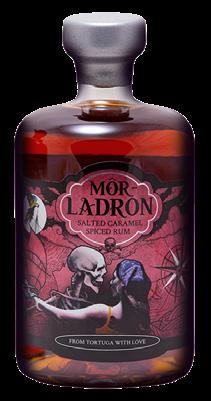


In March, the winners of our Bodegas Otronia and Argento competition visited Patagonia and Mendoza. There was time for some Buenos Aires culture, a smattering of tango and an afternoon of horse riding and quad biking. But the real wow factor was provided by the wines – and the people and places that produce them. Graham Holter reports
These days, you know you’re entering real wilderness when you’re warned that your phone signal is about to drop out for a few hours. Our MPV pulls over so the driver can make a last call before we venture westwards across the bleak Patagonian Steppe, a cold desert in the rain shadow of the Andes in the province of Chubut. We’re heading for one of the world’s most improbable wineries, and the most southerly commercial vineyards on the planet. We’re going to Bodega Otronia. It’s an empty but oddly beautiful landscape, peppered with tuft grasses and low shrubs. Isolated oil derricks nod rhythmically; occasionally we slow down to avoid colliding with guanacos, the hardcore llamas that thrive in this inhospitable part of Patagonia in a way that not much else does. Nothing we see on our protracted journey from the coast suggests that we’re entering wine country. Finally, the estate emerges like a verdant oasis, alive with fruit trees and poplars and vines heaving with ripe berries. The
harvest is under way, and frankly it looks much like any other. The pickers are busy with their work and amused at our interest in them. Perhaps we should ask someone to translate, for their benefit, how weird we think this place is. Who the hell plants vines in a windswept desert at a latitude of 45.3 degrees south?
The parent company of Grupo Avinea, which owns both Bodega Otronia and

Mendoza-based Argento, was already cultivating cherries at this location, just outside the small oil town of Sarmiento, when thoughts turned to viticulture. Soil mapping was commissioned, and the land was divided into 52 discrete parcels, some sandy, some more dominated by clay. Poplars were planted around each boundary as protection from the biting winds, and in 2010 the first Chardonnay and Pinot Noir went into the ground. Everything – including the trees – needs constant irrigation with water drawn from the nearby Musters lake. There is no rain.
The Otronia project was born of a shared vision but the man who is given much of the credit is Alberto Antonini, the Tuscan wine consultant who first saw the potential for sparkling wine – and possibly ice wine – on the estate. He still spends two days a year here and his current visit just happens to coincide with ours.
“When I came here, there were no vineyards around so we could only guess,” he says of the advice he provided to his client. “I was in love with the soil, and proximity to a lake is always very good. It’s a salty area so, as the vine roots get deeper
each year, they pick up more mineral elements. There are lots of herbs around. But there were no guidelines [to work to].”
Growing conditions at Otronia can be extreme, with temperatures reaching 35˚C in January and sometimes dipping down to near freezing during harvest. Despite the protection of the poplars, wind damage is still an occupational hazard. And yet it soon became clear that the grapes could ripen, not just to a level that would make them work for fizz, but in still wines. The estate is now home to Malbec, Merlot, Pinot Noir, Gewürztraminer, Pinot Gris, Torrontés and Riesling, all farmed organically. Sauvignon Blanc has recently joined the roster.
These are terroir wines, but terroir wines don’t happen without human intervention. Any time spent with the Otronia team inevitably involves references to “precision viticulture” and “precision winemaking”, and that’s exactly what’s required here on the frontier of vinous possibility.
Antonini seems to revel in the freedom that Otronia has provided. “We need to get over this concept that Europe is the only place where terroir exists,” he says. “We’ve probably only discovered about 20%, at most, of the terroirs that nature offers us.”
One thing is for sure: we can now add the Patagonian Steppe to the list.
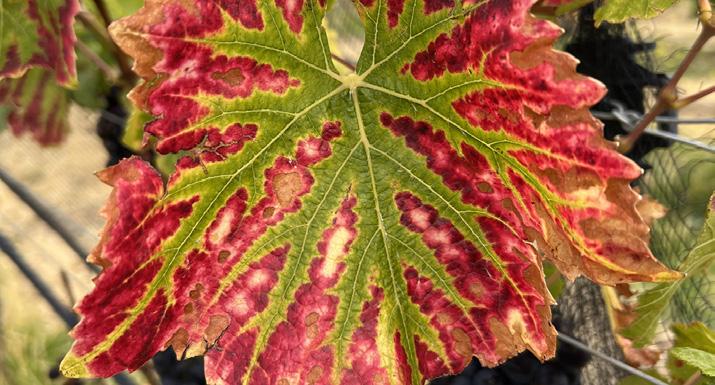
Otronia Lagunar Torrontés 2022
Aged for two years on its lees in oak tonneau, this perfumed and racy example of Argentina’s only indigenous variety was a highlight at Otronia. Kat Stead of Brigitte Bordeaux in Nottingham says: “It has the aromatic, slightly floral nose that you expect with a Torrontés, but is fuller bodied with a really nice creamy texture, and it’s still balanced with good acidity.” Kirby Bryant of Cambridge Wine Royston adds: “The overall quality, rich body and depth of flavour was something that I hadn’t really experienced before with Torrontés. I think it was a ‘wow’ moment for the whole group.”
Otronia Pinot Noir 2020
Another wine that impressed the guests, with its crisp, classic profile. Penny Champion of Champion Wines in Chislehurst enjoyed its “elegant style and silky texture on the finish”. It’s no surprise to learn that it was recently the highest scoring wine in the Decanter Americas premium Pinot Noir panel tasting.
Otronia Chardonnay 2021



Head winemaker Juan Pablo Murgia likes to employ a mixture of concrete eggs and oak in the winemaking process, followed by up to a year of bottle ageing. The wine emerges spiky and saline, almost suggesting a margarita cocktail. For Penny Champion, it has “delicate peach fruits on the nose, a little herbal freshness, and depth and balanced acidity on the palate”.


Malbec and much more in Mendoza
Our flights from Patagonia to Mendoza are disrupted by stormy weather and so our planned visit to the Argento winery slips off the schedule. But really it was never the priority: the plan was always to spend quality time in the vineyards. We leave the culture and commerce of Mendoza City behind us and head south to Altamira, in the heart of the Uco Valley.
Argento claims to be the biggest organic producer in Argentina, with 340 hectares farmed without synthetic pesticides and herbicides. The 20-hectare Altamira vineyard sits at an elevation of just over
1,000 metres, with the Andes providing a dramatic backdrop to the west.
It’s a sandy, silty landscape with huge rocks, excavated to make way for the vines, piled up on the edges of the parallelogramshaped plots. We ask why there are nets draped over the rows: we’re told it’s for protection against hail, rather than birds. (Disappointingly, we don’t see any condors – nor the pumas that have been known to make fleeting appearances.)
It’s a worthy setting for a tasting of Argento Single Vineyard Altamira Malbec 2021, with its characteristic burst of red fruits and violets. We also sample the premium Argento Single Block Malbec 2021. Each vintage, the best-performing
Altamira block – as judged in a blind tasting – has the honour of providing the fruit for this label, and every year Block 1 comes out on top. The 2021 is full-bodied but still elegant, with firm tannins and bracing acidity, and herbal notes mingling naturally with the dark fruit and spice.
Argento’s environmental ethos informs its approach to winemaking. It has Fairtrade certification for many of its wines and ensures that vineyard workers are paid fairly, provided with suitable clothing, and have access to a cleansing shower at the end of the working day. There are contributions made to schools and community projects in a region where poverty is often visible, and exacerbated by Argentina’s economic travails.
We head north to Alto Agrelo, a 230-hectare vineyard at a similar altitude to Altamira. It’s dominated by Malbec, but Cabernet Franc is in the ascendancy, thriving as it does in this part of the world. (In fact, thanks to a surge in its popularity, there’s now a shortage in Mendoza that vignerons are striving to address.) Cabernet Sauvignon, Sémillon, Chardonnay, Petit Verdot and Syrah are also Agrelo residents.
It’s here that we encounter a wild animal that can cause mayhem in the vineyard, and it’s going about its business in plain sight: the ant. Cecilia Acosta, whose role involves fostering biodiversity in Avinea’s estates, is figuring out ways of coexisting with these remarkable, but destructive, insects rather than blasting them with chemicals. After all, she reasons, they were here first.
Experiments are continuing, but she believes that encouraging ants to focus on plants other than vines as fuel for their underground fungus farms is likely to be the way forward. We each plant a species of sage between rows of Malbec, and hope we’ve done our bit to create an appetising distraction for the busy workers and soldiers we’re trying studiously not to step on. We’re all Team Argento now.

“It was brilliant to visit Argento in Mendoza, with the passion for sustainability and organic winemaking shining through. The highlights for me were the Single Block Malbec with its terroir giving the wine its point of difference: spicy, sweet ripe cherry aromas and a textured, vibrant palate. What a wine! The Argento single vineyard Malbec was also a winner, with rocky, sandy and silty soils making it fresh and aromatic, with mineral characters on the palate. It was refreshing to see two Malbecs coming from the same producer that have a point of difference and reflect their price points.”
Penny Champion Champion Wines, Chislehurst
“I have been familiar with the Argento range for some time. The Cabernet Franc is a real favourite of mine. I’m also a huge fan of the Single Block Malbec; the pure expression of the terroir and refined minerality make it really stand out. To have the chance to taste it surrounded by the vineyards of Altamira, watching the grapes being harvested, with the Andes mountain range glistening in the background, was truly spectacular. I knew it was going to be breathtakingly beautiful and an incredible experience, but what I really loved was the warmth of the people. It’s a wonderful country. I have left my wine heart in Argentina!”
K
irby Bryant Cambridge Wine Royston

Made without sulphur, this Malbec was a hit with the group, who instantly started a campaign for its export to the UK. “It’s fresh, full, complex and pure,” enthuses Kirby Bryant. “As a retailer I could see huge potential in the UK market. Most of the natural wines that we stock are produced using less mainstream grape varieties from slightly more obscure regions, and a number can be a little unapproachable and ‘funky’. To have a Malbec from Argentina that clearly states ‘natural’ would be a great gateway into this category for our customers.”

Fermented in stainless steel and aged in foudre, this Chardonnay has “a great balance between acidity and richness”, according to Kat Stead. There’s some fat, some vanilla, a touch of greengage and a lick of salt. “It doesn’t need malolactic,” explains head winemaker Juan Pablo Murgia. “It’s complex enough already.”

This variety needs time to ripen properly and maximise its red-fruit character and perfume, and here on the clay, sand and rock soils of Mendoza it seems to have found its happy place. Malbec can be a beautiful blending partner, countering any dry tannin, but in this case a judicious amount of French oak rounds proceedings off perfectly.



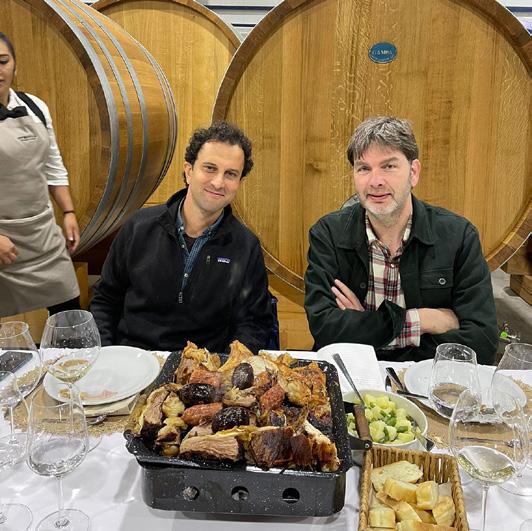


Cartuxa has a very long history and a great reputation. As a winemaker, how do you balance maintaining the style that your followers expect, and evolving the wines in your own way?
As a winemaker, and when faced with brands like the majority of those that make up the Adega Cartuxa portfolio, the big challenge is to always respect the style and personality of each wine, forgetting my personal wine style. This work is particularly easy and natural for me, as I see a lot of myself in the style of wines produced at Cartuxa.
How would you describe the house style of Cartuxa?
Cartuxa is a classic from Alentejo, and Portugal, where the influence of the region’s climate and soils allow for the best expression of the character of traditional grape varieties in the region. Our oenology is conservative and traditional, respecting the use of native grapes to create classic wines that represent the quality of the region.
Is Alentejo an exciting place to be making wine in right now?
Without any doubt. The generosity of the climate, even in its harshness, along with
Cartuxa Colheita Branco 2019
RRP
£23
A blend of Antao Vaz and Arinto grapes, planted in the Fundacao Eugenio de Almeida vineyards. Fermentation takes place in stainless steel at 16°C and the wine is matured on lees for nine months, with batonage. It has a pleasant aroma of citrus and tropical fruit. Complex, balanced and fresh.


the make-up of the soils and the diversity of grape varieties, which contribute to exceptional final lots, provide an enormous stimulus for the winemaker. Making wine in a region where the climate favours us, with the ability to work with environmentally-friendly agriculture, is an additional benefit.
Which grape varieties give you the most satisfaction to work with on a personal level?
Among the white grape varieties, Arinto. Among the red varieties, Trincadeira and Alicante Bouschet. These are regional varieties that flourish in the Alentejo. I chose Arinto because of its acidity and its excellent capacity for evolution over the
Geno Tinto 2019
RRP £8.99
Geno means a young farmer and artist Antonio Palolo was involved in the creation of the label. Trincadeira does well in hot climates, adding vibrant raspberry fruit and a herby, peppery note. The red-fleshed Alicante Bouschet gives an inky, treacle backbone and Syrah adds a touch of peppery spice.

years. It is a very important grape for the balance of Alentejo wines.
I say Alicante Bouschet because of its fruit, tannins and acidity, which create fresh and robust wines. The grape has the flexibility to create soft wines with fruit and freshness and it adapts well to the climatic conditions and soil of the Alentejo. Trincadeira is another favourite grape because it is very resistant and well adapted to the Alentejo, especially with the climate and elevated temperatures. It has nice fruit character and acidity. While Trincadeira is a difficult grape on the vine, it has the potential to produce wines with a lot of personality.
Is there anything new happening at Cartuxa that we should be aware of in terms of wines, branding, new acquisitions and so on?
Yes: the end of our journey to obtaining certification in the Alentejo Wine Sustainability Programme that supports the social, environmental and economic wellbeing of the Alentejo. The programme has an emphasis on the incorporation of eco-efficiency principles with the objective of promoting a more efficient use of resources, reduction, and reuse of byproducts.
Cartuxa Tinto Reserva 2017
RRP £45
A blend of Alicante Bouschet and Aragonez, planted in the Eugenio de Almeida Foundation’s oldest vineyards. Dark ruby colour. Fruity notes, cinnamon and clove and balsamic notes. On the palate, it is concentrated and complex, with firm tannins. With 15 months of ageing, you can taste the toast from the oak.


Graham Holter, The Wine Merchant: Lots of indies say that retail sales are a bit subdued, but events are doing well for them. Does that ring true?
Mo O’Toole, Carruthers & Kent, Newcastle: It was always our vision from the beginning to have events and drinking-in and food. It just so happens that we like to work that way, as probably a lot of indies do. I think you’ve got to have as many revenue streams as possible to survive.
Douglas Williamson, Juniper Wine Café, Dunfermline: We’ve got loads of events coming up; two wine tastings, a whisky tasting, a couple of local charity events and things like that.
We’ve always done events but now people are coming to us and wanting them done. They sell out quick so we’re having to do more. We charge for the tickets and give discount to buy on the night. And people do. It works really well, because they then they come in to pick up the wine and have a coffee and buy something on the way out.

The Wine Merchant and Hatch Mansfield invited six independent merchants to a panel discussion in Edinburgh to discuss a range of topics affecting the trade.
The second, and concluding, part of our coverage starts here
Patrick Rohde, Aitken Wines and The Wine Press, Dundee: Aitken Wines is 150 years old this year, so we’re planning a series of events. We’ve always done them; it’s what keeps the retail side of the business going.
About three or four years ago I was doing too many tastings really badly, but I’ve learned to do them properly and make them work for my business. Hosting a gin night on a Friday evening is just a mistake because people were out for the night and they had their pre’s before arriving at the tasting and there was never any intention to buy.
“Three
or four years ago I was doing too many tastings really badly, but I’ve learned to do them properly and make them work for my business”
I’ve learned that Thursdays are preferable to Fridays or Saturdays for tastings. I’m just doing them a lot better. I realise now how critical they are for the business. And I’m enjoying them more, to be honest with you. I keep it fairly simple; the ticket price is just there to cover the costs, and sales on the night aren’t the be-all and end-all because you could get sales six months down the line. It’s building that relationship with customers and putting stuff in front of them that they wouldn’t normally try.
Douglas Williamson: Often if we promote a tasting on a Thursday, we’ll do it on the Thursday and Friday because we haven’t got enough room for the
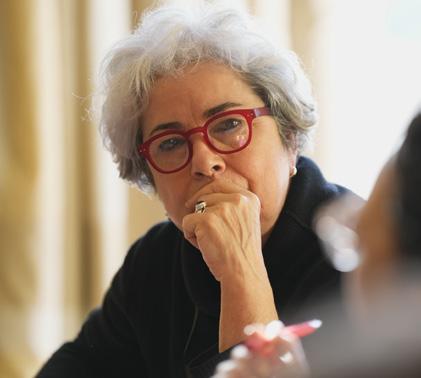
numbers wanting to come. Last week we did Iberia and we did it on a Thursday and we had a lot of retirees – the next day isn’t a school day for them. Fridays can be a bit noisier, but they come to us for the pre’s. So we had 25 guys in for a whisky tasting, but they were out by 8.30pm because they want to go out to the pub.
Graeme Sutherland, WineKraft, Edinburgh: We allocate days when we think we want to host an event as it gives us a framework to work with. If a supplier says to us they’ve got a winemaker coming in, we can say great, that fits with my tasting and we can work together.
Patrick Rohde: We just take whoever’s available whenever they’re available.
Douglas Williamson: We got a phone call about three weeks ago asking if we could do a tasting with a winemaker from South Africa. I was just pulling into the car park, and went to check if we could staff it. We said yes, they sent the logos over and we’d sold all the tickets at £30 a head by 4pm.
Phoebe Weller, Valhalla’s Goat, Glasgow: This is all very useful because we don’t do regular events. We do a Christmas and an Easter tasting and the idea is that we do an end-of-the-summer tasting too.
Douglas Williamson: I’ve already got seats in the shop, which helps.
Phoebe Weller: We’d need to get people sitting on empty beer cases, which we’ve done. Really we should do some more.
Mo O’Toole: The bottom line is that customers love events and it makes our lives more interesting as well. We have a mix of having visitors come in and us doing it ourselves. We have quarterly events planned in ahead and that’s quite helpful. We also do supper clubs. The next one will be Portuguese wines and food and for those we get a chef in to do something a little bit more fancy, but for other tastings we just do it from our own deli. We go off-site for our annual wine fair. That
“The bottom line is that customers love events and it makes our lives more interesting as well”

usually has 250 people and we partner with a local brewery that has a lovely music events room. Partnerships are really important. The best partnerships produce the best events.
Matthew Jukes has asked us to host his Newcastle Festival, his top 100 Australian wines, so we’re delighted to work with him on that. He hasn’t previously been to the north east so he’ll get a new audience and we’re excited about having him and promoting on his behalf.
Phoebe Weller: We’ve done two book readings with local authors. That was fun.
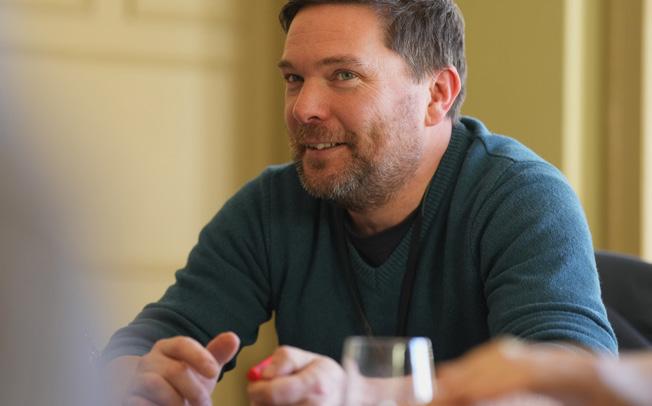
Graham Holter: What does everyone think about orange wine? Some merchants describe it as the emperor’s new clothes.
Phoebe Weller: Orange wine is huge for everyone. Every day you have to go through the conversation.
Douglas Williamson: “Are there oranges in it?” “No!”
Mo O’Toole: Orange wine is an Instagram phenomenon and that’s why lots of people are coming in and asking for it all the time. That and sustainability, actually. That’s what they’re asking about.
Graeme Sutherland: Maybe there are wine sites and magazines that are pushing and supporting it. For us in Edinburgh, orange wine is one of the biggest selling categories in our bar, Good Brothers, and the largest growth category for our shop, WineKraft. We can track our customers’ purchasing habits, and it’s not just a single purchase, people are engaging at a lower entry point with orange, and then coming back and saying, “right, I like that – what else do you have?” So it’s not a fad, I think it’s more experimental with people knowing there might be an interesting difference. It is attracting the more adventurous, curious, younger generation.
“Orange wine is not a fad ... it is attracting the more adventurous, curious, younger generation”


Phoebe Weller: I suppose it’s got that flavour profile, similar to those juicy IPAs, and it’s soft, and it’s fruit forward. It’s really, really good with food. It’s not about people buying a bottle of wine to drink by itself, it’s that they are looking for a wine to go with different sorts of food.
Mo O’Toole: We have a certain amount of orange wine and we’re responding very much to people coming in and asking for it. And I do believe that there’s a social cachet to orange wine for the buyers that come to us. They are mainly younger people and they have heard about it but often they don't know quite what it is, so we have to explain and we also take the time to explain what differentiates it from other wine.
Andrew Wilson, Drinkmonger and Royal Mile Whiskies: That’s a really important point. We went through the process of trying to tag everything in the shop so it was obvious – “this is an orange wine” – but then you actually look at the tech sheets and how the wine was made and you think, “OK, this has had three days’ cold soak on skins but it doesn’t look particularly orange”. But we understand that this is a really nice way of opening up conversations
about different winemaking processes. I don’t think that novelty alone is selling it for us anymore.
Douglas Williamson: I’ve chosen to do three orange wines and they go up in price to £22, but they are really there for me to sell other things from. We still sell quite a lot of those three wines, which annoys me.
Phoebe Weller: You just don’t like orange wines!
Douglas Williamson: No, I really don’t.
Mark O’Bryen MW, Hatch Mansfield: Do people buy it as something to put on the table to be talked about by the people eating, or is it a bottle of wine on a Tuesday evening, purchased because they want to drink it? Is it there to talk about or to drink?
Phoebe Weller: Both. For us, I would say the higher end stuff is Instagram-able, it’s usually got a cool label and it looks great in the glass if you’re taking photos of yourself with it. It does have something in common with that gin thing, in that it tastes of something familiar and it tastes of something different, but it does weird stuff with food. It will highlight different aspects.
Mark O’Bryen MW: But you’ve got to cook a particular food – it’s not going to go well with a Big Mac.
Phoebe Weller: I think it would. That kind of grip and acidity plus a bit of juicy body to it as well: great with a Big Mac. Yum yum.
Andrew Wilson: It’s about offering something a bit different flavour-wise. How often do you get tannins and white pepper notes in a white wine? I think people cling on to that rather than it being just the trendy thing.
Graeme Sutherland: I think its captured the imagination of the young, curious public. I don’t think we as independents are universally championing it. I haven’t to any great extent. But it's happening without us.
“Orange winemaking is the oldest style of winemaking. There’s nothing modern or new about it”
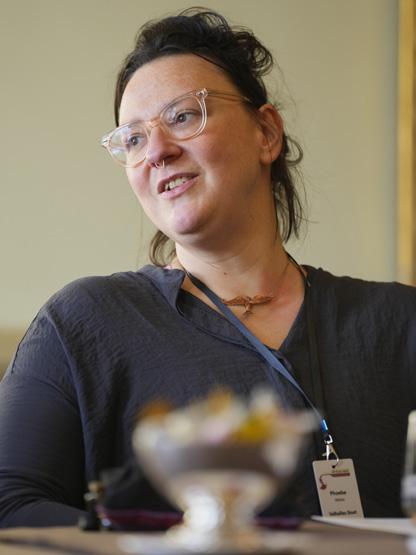
Patrick Rohde: Orange winemaking is the oldest style of winemaking. That’s how wine was made; there’s nothing modern or new about it.
Phoebe Weller: That’s why it’s the emperor’s new old clothes, not the emperor’s new ones.

Graham Holter: Are your customers talking to you about sustainability?
Phoebe Weller: There are so many individual logos and credentials. Honestly, could everyone just choose one thing? Like that thing you get on fridges with the eco rating? We need that to show the level of sustainability.
Andrew Wilson: To be registered organic or biodynamic, the rules can be quite strict and you could be taking much better care of the vineyard while not actually quite qualifying. I like it being this distinct thing of “I am looking after my vineyards in the way that is best for them”.
Mo O’Toole: Customers are asking for vegan and organic all the time, and then relating it to their headaches and everything else. But it’s interesting because the only two events that we organised that crashed were events on sustainability in wine. Hundreds of people are coming through the door and asking about organic and natural wines. And then when you give them the opportunity to learn all about them, they’re not that interested.
Graeme Sutherland: I agree that the labelling of organic and biodynamic isn’t as important as the practice of actually farming that way.
The act of being sustainable, and practicing organic and biodynamics, is really important, but that leads back into this engagement with the consumer when they come in; it’s actually starting that conversation. We can say “we haven’t got any certified organics, but everything we’ve got is basically practicing organic”. It’s a conversation we have all the time and it’s one which then allows us to skip around the shop and show different things to people, which is very useful.
Mark O’Bryen MW: The owner of a wine shop in Scotland told me that she had an incredibly successful Sauvignon which she recommended to a lot of people. She also had a lot of customers come in saying they were looking for an organic wine, so
she directed them towards the same Sauvignon. She put “organic” on the facing and the sales of her previously most successful wine literally halved.
Andrew Wilson: I think I get the sulphite question more than I get asked about sustainability. After I give them a long chemistry lecture, they occasionally buy a bottle of something that is uncertified organic.
Mark O’Bryen MW: What about sustainability for you as a business?
Mo O’Toole: In general it’s important for all of us, isn’t it? Because this is a matter of climate change and what it’s doing to the wine industry, so ultimately it’s something we’ve got a huge interest in. But I think it’s also about communicating that in the right way, and about the right sort of wine.
Douglas Williamson: About a third of my shop will be labelled up with vegetarian/vegan on it where I can prove that it is. And it does make a bit of a difference – it didn’t until we had a vegan café open next door. I don’t think organic makes as much difference as I thought it would, not as much as veggie/vegan.
“I think I get the sulphite question more than I get asked about sustainability”
Mo O’Toole: Going back to orange wines, we are sceptical, and we have only the ones that we consider to be really solid and focus on the organic, vegan and biodynamic aspects of them. We’re saying that is a huge indicator of how good for you the wine will be as opposed to it just being orange. That’s the line that we've taken as a shop.
Graeme Sutherland: We don’t use the term “natural wine”, because natural can mean 100 different things to 100 different people. It can mean anything from really clean organic wine to very cloudy, unfiltered, cider-esque bottles of wine and everything in between. I love all wine and will drink every single style. But it’s very confusing to the consumer when you say “natural”.
‘We have to try, we have to fail, we have to learn what’s right’
As Hatch Mansfield celebrates 30 years of trading, director Mark Calver reflects on the company’s sustainability credentials and looks forward to its next achievement as it aims for B Corp status
“When you set up a business like Patrick McGrath and I did 30 years ago, you have a view about what you want to try to achieve,” says Calver. “Our view was always, if we’re going to do this, we want to think of the next generation and the generation after that. And attempt to leave the world in a better place than we found it.
“It’s difficult to reconcile sometimes because if a distribution business is successful, it will be creating more carbon. The first thing you can do is measure your impact and, once you’ve done that, you can make some decisions about what to do about it.
“In those days carbon was top of the agenda and the first thing we did was try and capture all the CO2 that we created, not only with all the inbound boats, trains and lorries from Europe, but all our travel within the UK from our bond through to our customers.”
Offsetting carbon emissions in a meaningful way has involved planting trees in collaboration with the Woodland Trust as well as projects further afield, meaning that Hatch Mansfield is now accredited carbon neutral.

While he admits frustration at the daunting task of addressing Scope 3 emissions (that is, emissions from third parties), Calver is confident that Hatch Mansfield will have reduced its Scope 1s and 2s by 40% in the next five years.
But he says: “It’s Scope 3 that really matters. Scope 1 and 2 are not going to stop climate change, but I guess it’s a start.”
Other initiatives include UK bottling – “not having to transport 7,500kg of glass per container for 12,000 miles will have a huge impact on Scope 3 emissions” – reductions in bottle weight, and a trial piloting canned wine.
“It’s about not being afraid to fail,” says Calver. “Because if you never fail, you’re never trying. If you’re not trying, you’re not going to make a difference. So we have to try, we have to fail, and we have to learn what’s right, otherwise we’re just as guilty as anybody else who is doing nothing.”

This first “dabble” led to the company achieving ISO 14001, a cornerstone in the robust framework Hatch Mansfield has in place to ensure the company continues its environmental and sustainability commitments.
This all serves as a backdrop to the wineries that Hatch Mansfield chooses to work with: mostly family owned, multi-generational producers who all share the same ethos.
“They all have various accreditations to support what they’re doing from a sustainability point of view,” says Calver, “but you have to respect the climatic impacts of the places that they’re growing grapes. I look at Esporão in Portugal. It’s pretty difficult to be organic in Vinho Verde, because it rains all the time, but they are 100% organic in Alentejo.

“The whole purpose of an ISO is that you get better every year,” explains Calver. “You’re supposed to reflect, review and try to improve and look to the future. I think the broader approach to sustainability of the ESG [environmental, social and governance] agenda is very important, so we’re now in the process of going towards B Corp certification.”
“If we work really hard to produce the best possible wines with the least possible impact, then ultimately the consumer should be able to choose based on quality. They should not need to worry too much about the sustainability side because we ought to be in a position where everybody in the supply chain acts sustainably. And I think they will, because eventually the gatekeeper – the retailer – won’t stock the wines that aren’t.”
Sponsored feature

The famous port house now has winemaking interests across Portugal, and its acclaimed wines from Bairrada, Dão and Vinho Verde are now available in the UK via Mentzendorff
Sponsored feature
The Fladgate Partnership, the familyowned company behind such widely loved and admired brands as Taylor’s, Fonseca and Croft, is without question one of the most important and respected wine producers in the world. Known for its forensic attention to detail in vineyard, cellar and lodge, the company is intimately associated with the Douro Valley, where it has pulled off that near-impossible trick: maintaining a strong sense of tradition forged over three centuries of winemaking, while coming up with a stream of innovations that have helped keep port relevant to 21st-century drinkers.
It was no surprise, then, that when the Fladgate Partnership’s managing director, Adrian Bridge, announced the company’s acquisition of Portuguese company IdealDrinks last August, it made headline news across the wine and business press. This, after all, represented the Fladgate Partnership’s first foray into table wines. And the thought of what a company responsible for some of the finest ports in the market might do when its winemaking skills were applied to unfortified styles was a truly mouthwatering prospect.
Nine months on, and Fladgate Still & Sparkling Wines, the wholly owned subsidiary which the Fladgate Partnership has created based on the vineyards and brands acquired in the IdealDrinks deal, has arrived in the UK with a range of exceptional Portuguese
wines, available from its UK importer, Mentzendorff. As Raul Riba D’Ave, the head of project at the new division, explains, it’s a portfolio that is already “very wellknown and associated with high-quality in Portugal” – and, given the quality of the wines and the branding expertise of the parent company, they seem set fair for the British market, too.
He says: “This was a strategic move: to have specific vineyards to produce quality Portuguese table wines without having to use grapes from our traditional Quintas in the Douro, which are all devoted to port wine production.”
The FSSW wines are drawn from perfectly-situated estates in three key regions in the north of Portugal: Colinas de São Lourenço in Bairrada, Quinta de Bella in Dão, and Quinta da Pedra and Paço de Palmeira in the north and south respectively of Vinho Verde.
Each contributes something distinctive to the stylistically varied, high-quality FSSW portfolio of brands and wines, which takes in everything from high-quality bottle-fermented Bairrada sparkling wines and poised, gastronomic single-varietal Vinho Verde whites to outstandingly good value red and white blends and singlevarietals and what Riba D’Ave calls an “iconic” top red with a big reputation in Portugal and Brazil.
It’s the latter wine, Principal, that Riba D’Ave considers the “most important wine we have in the portfolio”. The flagship bottling from FSSW’s Bairrada estate, it’s
a blend of Touriga Nacional, Cabernet Sauvignon and Merlot with a dash of Cabernet Franc or Petit Verdot in certain vintages, which is given long ageing before release, first in barrique and then in bottle (the current release is the 2012, while the 2017 has just been bottled). The extended ageing reflects the structure and power of the wines, which Riba d’Ave says is reminiscent of a Grand Cru from Left Bank Bordeaux or a Super-Tuscan.
“The Cabernet Sauvignon, along with the Touriga Nacional, performs really well in our estate, which has a Bordeaux soil [limestone] and climate,” Riba D’Ave says. “It’s really mature, with fewer of the pyrazines you have in lesser years in Bordeaux, plus a fleshiness. We want to show the market we have a SuperPortuguese, like a Super-Tuscan – a similar style, but with Touriga Nacional to have that Portuguese twist.”
But Bordeaux is the presiding influence on Principal and the other wines – which include a São Lourenço estate red based on the same blend as Principal and a white blend made from Chardonnay, Sauvignon Blanc and Arinto on the Bairrada estate.
We
have a SuperPortuguese, like a SuperTuscan but with Touriga Nacional to have that Portuguese twist

“We are really trying to imitate Bordeaux here,” Riba D’Ave says. “The limestone soils, dry farming [everything is made without irrigation], the high-density plantings, with really deep roots to touch the mother rock, which means all the wines have amazing textures, freshness, a minerality: it goes across the range.”
The Bordeaux-meets-Portugal theme is there, too, in the presence of legendary Bordelais winemaker Pascal Chatonnet, who, Riba D’Ave says, “is the ancient man of the project! He’s made wine here since the very beginning; all the wines we have in stock, from 2008 onwards, were made by Pascal. He has the style in mind, he knows what we want, he is a fantastic technical guy.”
Chatonnet works with two winemaking teams: one for Bairrada and one for the Dão and Vinho Verde, both of which have specialised skillsets. In Bairrada, that includes mastery of bottle-fermented sparkling wines with extended lees ageing for the Colinas brand. “Bairrada has a long and important history with sparkling wines, and we want to be a reference for sparkling in Portugal,” Riba D’Ave says. “We are in the right region with the right soil and the right varieties [Chardonnay and Pinot Noir] and the best equipment [a ‘Rolls Royce’ Coquard press] to do that.”
Much the same can be said about the FSSW presence in Vinho Verde, which is perhaps better thought of as two distinct
projects. The first, Milagres, based at Quinta da Pedra, one of the most historic properties in Vinho Verde’s Monção and Melgaço region, is devoted to Alvarinho, which thrives in this natural amphitheatre, with its granite soils and south west exposure, creating a richer, fuller-bodied style enhanced by fermentation with neutral yeasts. The second, Royal Palmeira, is all about Loureiro, which produces wonderfully concentrated but vibrant, maritime-influenced white wines in the magnificent Paço de Palmeira property in the southern part of the Vinho Verde.
In the Dão, meanwhile, the Quinta Bella vineyards provide FSSW with the ability to apply its quality-oriented, dry-farmed, high-density methods to a very different
climate (continental rather than maritime) and soils (granite rather than limestone) found in Bairrada.
And the results are no less impressive, whether expressed in the Bella Elegance range of single varietals (Touriga Nacional, Pinot Noir, Sauvignon Blanc, Pinot Noir Rosé) or the top Don Bella red (soon to be renamed Grand Bella), a wine which changes in composition each vintage (sometimes it’s a single variety, other times a blend) but always has the classic Dão ability, as Riba D’Ave says, to evolve from power into elegance as it ages. An ability, come to think of it, that characterises Fladgate’s work, whether in port or this hugely impressive first move into fine table wines.

We weren't joking. You asked for it and now it's here to stay. So lock those doors, sharpen those pencils, and focus all your energies on 10-letter court games and space agency abbreviations.
Take a photo of your completed grid and send it to claire@winemerchantmag. com. The first correct entry drawn out of the Halfords bike helmet will win a bottle of Château Bellevue Princesse Lieven Beaujolais, courtesy of the kind folks at Hayward Brothers.

The company’s director, Tony Schendel, reckons this month’s winner will be getting something pretty special.
“Château Bellevue is one of the oldest as well as most dynamic wineries in Beaujolais,” he says.
“Beneath its traditional exterior, dynamic young winemaker Elodie Rousselot creates exciting new wines from amphorae, concrete eggs and stainless steel barrels. Tiny quantities of this organic, single-estate white Beaujolais are produced, and it tastes like a top Côte d’Or white. Incredible!”
Answers to questions on page 14
1. Diageo 2. Galicia 3. They are all urban wineries (Blackbook and London Cru in London, Gutter & Stars in Cambridge)
4. Isinglass 5. Cheval Blanc (1961), a Merlot/Cabernet Franc blend
Crossword No 3
ACROSS
1 US space group (1,1,1,1)
3 Court game (10)
10 Consequently (9)
11 Female sovereign (5)
12 Survive (7)
13 Bowling pin (7)
14 Skin eruption (4)
15 Pachyderms (9)
19 Sue (9)
21 German Mrs (4)
24 Passage (7)
27 Surrey commuter village (7)
28 Trembling poplar (5)
29 Mouth organ (9)
30 Science of numbers (10)
31 Undiluted (4)
DOWN
1 Belonging to a country (8)
2 Enticement (9)
4 Papal (9)
5 Leg joints (5)
6 Mexican liquor (7)
7 Proficient (5)
8 Beam over a door (6)
9 Started (5)
16 Medley (3-6)
17 Frighten, usually by violence (9)
18 Take away (8)
20 Squeeze together (7)
22 Las Vegas setting (6)
23 Racecourse (5)
25 Island in the Bay of Naples (5)
26 Resort lake in both California and 22 down (5)
April winner
Congratulations to Martin Keogh of Grape Minds in Wallingford, Oxfordshire, who is the winner of the second Wine Merchant crossword.
We salute his endeavours and will be presenting him with a bottle of Ver Sacrum Monastrell, courtesy of our friends at Ucopia Wines, at a black-tie ceremony at the Dorchester Hotel, unless he’d prefer to receive it by post.
Solution to Crossword No 2

FOUR INDEPENDENT MERCHANTS TALK US THOUGH THEIR GREECE RANGES
By DAVID WILLIAMSGoustolidi 100%
Style: Dry white
Vineyard: Lagopodo Zakynthos
Vinification / maturation: Prefermentation extraction under controlled temperature; alcoholic fermentation at graduated temperatures. Maturation on the lees for two months.
Tasting: Fresh nose and palate with aromas of lemon flowers, citrus fruit, bergamot, jasmine and white stone fruit.
• Taste Grampsas wines at the 50 Great Greek Wines event at the China Exchange in London on May 29.
SOUTHERN WINE ROADS
RRP £22

Avgoustiatis 100%
Charmat-method sparkling wine following the tradition of spumante sec wines. It is made by strict selection of Avgoustiatis grapes grown at an altitude of 200-600 metres. Refined aromas enveloped in playful sweetness which stands in perfect balance with its refreshing acidity.
• Follow the Vakakis winery and its importer Southern Wine Roads for upcoming opportunities to taste the wines in London, Manchester and Edinburgh.
sOUTHERN WINE ROADS
RRP £19.50

Skiadopoulo, Pavlos, Goustolidi, White Robola
Style: Dry white
Vineyard: Lagopodo Zakynthos
Vinification / maturation: Prefermentation extraction under controlled temperatures. Maturation on the lees for four months. Six months in French oak barrels.
Tasting: On the nose, aromas of lemon blossom, citrus fruits, bergamot, jasmine and white fruit. Sweet vanilla notes and a peppery ginger feel. On the palate, it surprises with its complexity and lively acidity. Can develop gracefully in the bottle for five to seven years.
sOUTHERN WINE ROADS
RRP £24

Avgoustiatis 100%
Classic red vinification followed by maturation for 12 months in French oak. A charming deep ruby colour with an intriguing nose bearing aromas of chocolate, tobacco, cherry jam and ink. Well-structured and warm on the palate with flavours of red fruit and pepper and a long finish.
Avgoustiatis is originally from western southern Greece, but is now thriving on a couple of Aegean islands. It performs particularly well on Samos, due to altitude and low yields.
sOUTHERN WINE ROADS
RRP £22

Avgoustiatis 100%
Style: Dry red
Vineyard: Lagopodo Zakynthos
Vinification / maturation: Classic red vinification with cold extraction at controlled temperature. The wine stays on fine lees for three months with periodic stirring and a further 12 months in French oak barrels of medium burn.
Tasting: Complex and balanced with delicious tannins, good detail and long finish. Can develop further over seven to nine years.
sOUTHERN WINE ROADS
RRP £25

Muscat Blanc 100%, naturally sweet
A naturally sweet PDO Samos wine made with sun-dried Muscat Blanc grapes. It demonstrates delicate floral and herbal notes (mint) in coexistence with muskier aromas and flavours of apricot, loquat, frankincense and rose delight flowers. Distinguished by its vivid acidity, balanced with generous smooth sweetness and a long, lingering finish.
Muscat Blanc is the grape with the most PDO classifications in Greece – five in total – and a multitude of regional names, from Thrace to Crete, showing how popular and interwoven with Greek wine’s history it has been.
sOUTHERN WINE ROADS
RRP £22

 Melina Cucchiara
Moreton Wine Merchants
Moreton-in-Marsh, Gloucestershire
Melina Cucchiara
Moreton Wine Merchants
Moreton-in-Marsh, Gloucestershire
Tell us about your Greek range.
We’ve got an Assyrtiko from Boutinot, a Malagousia and a rosé from Ellis of Richmond. We did have two reds from Berkmann – Xinomavro – but they sold out.
Well, that’s a good sign …
Last Easter we sold out of the Assyrtiko, which is really popular, because customers always like it with lamb at Easter as an alternative to white Burgundy. It cuts into the fat of the lamb really nicely. So, this year, I got extra in, and then the bit of red I had had gone. There’s never a formula!
What do you like about Greece and Greek wine?
Being Italian, I just like the different lifestyle, the way they live outside more than indoors, their approach to wine … we grew up with wine on the table and, like the Italians, the Greeks drink with their food.
I love Assyrtiko. The first one I had was from Santorini, but the one I have now from Boutinot, Domaine Papagiannakos, is from Attiki. I like their crisp whites. And I like that they’re foodie wines, because for me that’s what it’s all about, pairing it with something to eat. There has been a decline of people drinking. But when you hear all the centenarians talk, they always say they have a glass of wine every day. It’s not bad for you in moderation. Just get out there and be a bit more Greek or Italian about it!
Does Greek wine fit into a wider trend?
Today everybody wants something different. We have the Enomatic machine, and we try and rotate, with something Bulgarian, something from Ukraine, or an orange wine from Argentina. That’s what people want, especially the Millennials and Gen Z; something different. In Greece, their wines are naturally a bit like that anyway, without all the “look at me, I’m natural” or going on about being an orange wine.
How can Greek wine improve its performance in the UK?
What we don’t get is the Greek wine producers coming over. All it takes is one person and it’s a sell-out. Even though I can wax lyrical about the wines in my shop, they want other people, not me! I don’t think they promote it enough.
 Sadie Wilkins
Vineyards Wine, Sherborne, Dorset
Sadie Wilkins
Vineyards Wine, Sherborne, Dorset
Tell us about your Greek range.
We’ve got quite a few from Hallgarten – Steve Daniel is known for his sourcing of interesting stuff. The whites are very popular, but the red we have – Alpha Estate Xinomavro – has done very well and stolen some sales from Bordeaux. It has herbal, leathery, savoury notes; rich, earthy – the reds are great food wines. It’s the richness – and they’re very distinctive.
With the whites, we have Vidiano and Malagousia, and Assyrtiko is very popular. We have quite a few Assyrtikos from Santorini, then we have other Assyrtikos from people who have gone through the effort and challenge of planting them in other places. Part of the appeal for people is that we’re in a phase of crisp mineral wines. Then, for Viognier fans, we have the slight blossom, soft peaches of Vidiano instead.
Apart from the style, what do you like about Greek wines?
They’re really well priced – you’re getting elegance and style for £16 a bottle, some are a little bit less than that, while the reds at the £20-£22 mark … you’d be spending at least £10 more in Bordeaux. Great value!
And it’s still a country where there’s a feeling of surprise. It’s perfect for indie retailers. When the wines are sat on a supermarket shelf, the names of the grapes, and the pronunciation, is intimidating. That’s why people pick up Sauvignon or Malbec. But when they come into an indie
 Chris Connolly Connolly’s, Birmingham
Chris Connolly Connolly’s, Birmingham
Tell us about your Greek range.

merchant they’re looking for indigenous grapes and what they find on their holidays.
Do you ever struggle to sell Greek wine?
There’s still a bit of thing of you hear from some customers that you only get good Greek wine if you’re there – people, mostly older people, seem to have PTSD about some of the stuff they have had here versus the stuff from a taverna in Greece.
There was an interesting Greek tasting in Manchester I went to, and we have taken on a handful of wines subsequently. We’ve picked up a few from Hallgarten, which is the extent of it for now. There is something going on there and, while we’ve got just a snapshot, there is some really interesting stuff.
What do you like about Greek wine?
I just was talking about Greece on Sunday in the bar [Connolly’s Arch 13]. And there was an Assyrtiko from Hallgarten, Gaia Estate and … well, I didn’t taste it, I drank it. It was a breath of fresh air. Lovely freshness, almost light but really balanced and elegant. That was really good.
How can Greek wine improve its performance in the UK?
Some of the pricing is a bit ambitious. It’s just a case of shipping – whoever does it, it’s going to be a bit expensive.
And going back to the bar on Sunday, the person I was with said, “it’s not all retsina, then?” which shows there’s some education to be done.
I think also, over the past five or 10 years, while you still have many wine consumers who just stick to their Sauvignon Blanc and Malbec – so many wine consumers – you’ve also had a tidal wave of new wines coming onto the shelves, in independents, be they from Greece, Bulgaria, Moldova … the list goes on and on and on.
That’s great, and it does keep people interested. But obviously these are grape varieties that people are unfamiliar with, and I suppose, from the point of view of indies, it can get confusing.
Leto Paraskevopoulos of Gaia Estate, Santorini
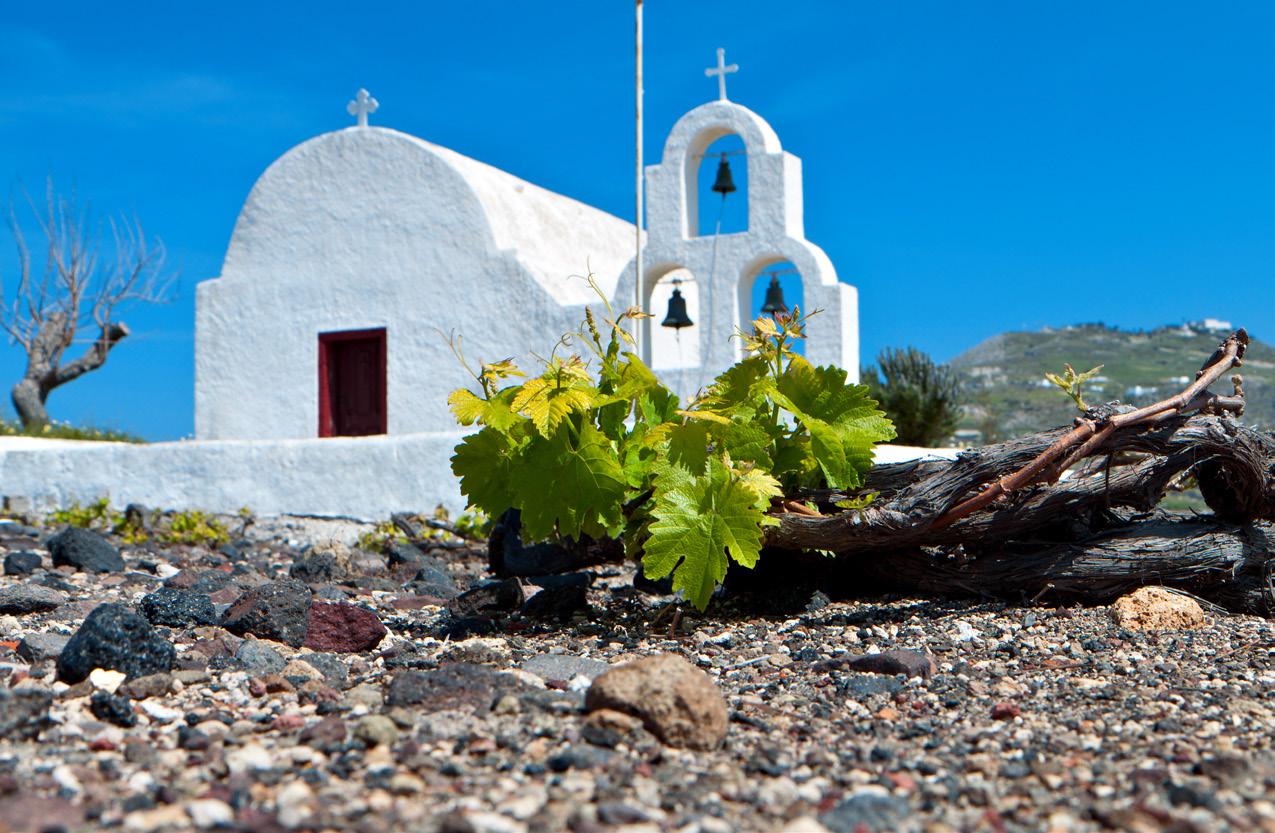
Tell us about your Greek range.
Finn: We’re just about to do a Greek promotion, through Westbury. It’s not a centralised Greek body, but a collection of Greek wineries. Of all the suppliers they listed, we currently work with two: Boutinot and Maltby & Greek. We do a lot of M&G’s food lines as well. Usually, we have around about six Greek wines on the list – three whites and three reds. During the promotion we’ll expand that and make it more meaningful and have a display and do some tasting.
Rupert: We’ve got Assyrtiko from Papagiannakos, an Assyrtiko-Malagousia blend, Little Ark, from Ellis, a Roditis …
How does Greek wine go down with your customers?
Rupert: Customers want to try something here that they’ve had on that on holiday, and we’ve built up a bit of a following for some of the whites.
Finn: One of the things we do across the shop, including in the wider food hall, is we want it to be an exploration of food and wine around the world, and if we can open their eyes to things they haven’t tried … so that’s why we’ve got Georgian wine, Japanese wine sometimes …
Rupert: People try them. They want an Assyrtiko, and then they try the AssyrtikoMalagousia blend and it’s got more texture than the Assyrtiko, which is more citrus and direct.
The Xinomavro I have is £25; that’s from Alpha Estate [Maltby & Greek]. I will recommend it if someone’s looking for a red that’s not too heavy but still has some power, something like a Nebbiolo, or we’ve got some Georgian wine in a similar sort of area. Finn: It’s a bit of a hand-sell.
How can Greek wine improve its performance in the UK?
Finn: One of the big challenges is the price point. They are still a bit expensive. People have their preconceptions, and they would rather spend, or would naturally gravitate to, somewhere they know. Do you want to spend £20 on a bottle of Greek wine?
Rupert: We are provincial wine shop. I’d love to get a Santorini Assyrtiko, but I don’t think we could sell it at more than £40 a bottle. The Assyrtiko we have is £18 on the shelf, and we can say, “you can spend over £20 on a Chablis …”

Usually, we have around six Greek wines on the list –three whites and three reds


David Williams offers some news updates from one of the world’s most lauded wine-producing countries

for high-quality port”.
Then, in March, the company broke the surprising news that it had, in the words of Bridge, “completed” its move into table wine with the further acquisition of Douro producer Quinta do Portal. The purchase included 53ha of vineyard, a winery and a boutique hotel, and will form the basis of Fladgate’s first foray into Douro table wines, lending yet more credence to the widely expressed idea that table wines, rather than port, are where the region’s future increasingly lies.




trade fell sharply in 2023, for a variety of reasons (inflation, interest rates, rising living costs, two wars, economic instability in families, among other factors), which meant that our exports fell. Even so, the figures for our global competitors point to much greater falls than ours, meaning that, despite everything, Portugal has increased its share of the
Falcão was also encouraged by a modest but far from insignificant increase in the average price of Portuguese wines, with the cost per litre rising by 0.66% from 2022 to €2.90. And he has taken heart, too, from the continued strength of Portuguese wine’s main markets, which are led by Brazil and the US, but with the UK, which imported an impressive €88m of Portuguese wine in 2023, not far behind in third.



Wines of Portugal is keen to capitalise on the groundswell of support in the sector, with the generic running its successful, industry award-winning June is for Indies campaign for the fourth year this June. The campaign, which sees 15 selected retailers given support by Wines of Portugal to run their own promotions, with wine writer Jamie Goode presenting 15 Instagram Live sessions devoted to each of the participants and their wines. According to Wines of Portugal, participation can translate into a sizeable boost in sales. “On average, sales of Portuguese wines, for the 2023 participating retailers, were up 356.65% in value and 207.26% in volume, when comparing June 2023 vs June 2022; and up 585.78% in value and 275.33% in volume, comparing June with the previous month of May 2023,”

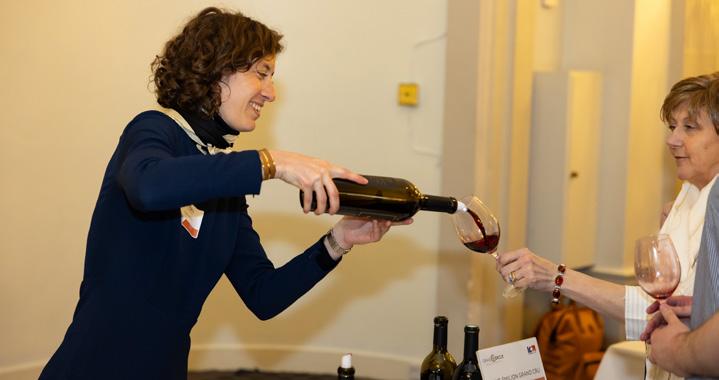

The 2023 vintage in Bordeaux has been described by some as outstanding, and members of the UK wine trade had the chance to judge many of the wines for themselves last month at the Grand Cercle des Vins de Bordeaux tasting.
More than 120 châteaux were represented, covering 27 of Bordeaux’s appellations, giving visitors a unique insight into what they can find in the latest en primeur campaign.
According to Gavin Quinney of Château Bauduc, writing on the Jancis Robinson website, 2023 is “another year when the overall volume is quite low, yet the yields for the more prestigious appellations are comparatively generous”.
Mildew was a problem for many growers, but for those who escaped it, “everything points to what might be called a ‘classic’ Bordeaux vintage,” Quinney says: “One where the better wines show fruit and finesse over structure, richness and power.”
The London tasting took place at The Dilly in Piccadilly and was attended by a mixture of importers, merchants and critics.

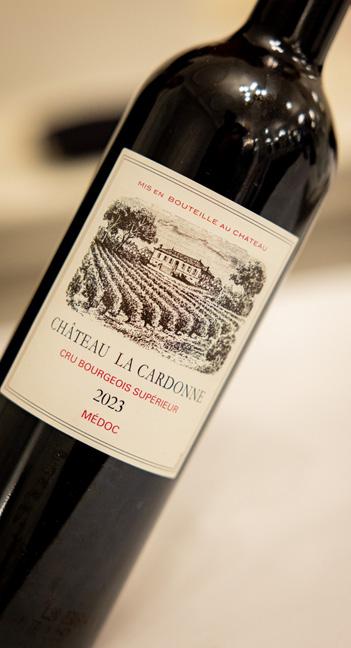





Imet the accountant in the park for an Amazing Picnic Lunch.
When I say “met the accountant”, it sounds preplanned. When I say “Amazing Picnic Lunch”, it sounds like Champagne and jointed, tupperwared roast chicken with tarragon mayonnaise or maybe just the 3 for £8 Deli Deal (which I just Googled, being unsure of the £8 price tag, and have consequently been assaulted by Status Quo’s Saving all Over the Store which, irritatingly, I will be singing for weeks), rather than the small bottle of kefir and pocketful of walnuts and scrunched-up Post-it notes which I was generously offering to share.
It wasn’t preplanned and it wasn’t a picnic, really, I just happened to be sitting on the concrete block where we used to watch the bats at the start of the pandemic when Ian passed by.
Ian. The most basic unit of a name, Ian. Sharply dressed, expensive smelling Ian with his boring skin and slightly interesting penchant for good Armagnac which I invariably forget to order.
In the absence of Shop and Numbers, I showed him Captain Coot, with his monumental nest. Captain Coot is deranged, or at least a massive statusdriven overachiever. His nest, in prime leafy West-End locale, towers two and a half foot high and is made not just of reeds and twigs but crisp packets and broken ball launchers. He’s a Big-Manbird – if any other bird comes within 10 metres of his penthouse he’s off, quite clearly screeching,
Ian wasn’t that impressed with the Captain although he hid it well. We fell to talking about Shop and Numbers, and we parted ways with his chilling phrase, sometimes the juice just isn’t worth the squeeze

Phoebe Weller of Valhalla’s Goat in Glasgow had time to ponder this question on a recent sojourn in London, where she avoided lightning but gravitated to chips
I’m recently back from London which was both literally and figuratively A Trip. Highlights included some excellent Illegal Birthday Chips courtesy of this fine publication and a bolt of lightning hitting the building across the road from Mary’s Living & Giving for Save the Children. Like right outside. The change in my electrical charge made me spend £45 on a pair of green crushed velvet mules.
The lowlight was the journey back, beginning with the inevitable struggle to get to the station on time despite leaving Camberwell two hours before departure,
the departure time, is it, given that the gate closes two minutes before the train leaves, if the gate has not malfunctioned which in this case it had, locking four police officers on one side of the gate and 10 passengers on the other. In the middle an Avanti employee leaned on the dead turnstile, looking like his bones had been removed, possibly fried by a bolt of unexpected urban lightning.
Trains, Wikipedia tells me, invented Time, so it is Trains’ right then to subtract two minutes of time or indeed to add three or four if it feels right. Denied access to the train, which left seven minutes late, I successfully obtained the Magic Golden Next Train ticket from another Avanti team member, now demoted to standing at an Evening Times kiosk rather than the large empty helpdesk arena behind. I also managed to get some pots of things from M&S for £8 and avoided a singalong with Rossi et al.
I ranted this to Prince Harry (not that one) who is a London expat. In his worldly Big City wisdom he nodded and said if everything goes smoothly at the station you cannot then use the phrase Euston we have a problem, an aphorism



If you’re looking for state-of-the-art storage and distribution solutions, then that’s nice.
But have you considered looking at something more exciting? Let’s Chuck Boxes brings you next-level, future-proof and oddly mind-bending storage and distribution that really puts the customer first-ish.
To give you a flavour of what we offer that no one else does, or wants to do, here are just three of our most innovative extra-value services.
Fklodzof Sellotape
We all know that cardboard can be a cruel mistress and is susceptible to the vagaries of the British climate. With our patented new Fklodzof sellotape, we are able to turn any squishy, unstable, 90s style cardboard box in to a thoroughly 21st century, fully waterproofed homage to the future of wine transportation.
• Boxes sealed using the Fklodzof method should not be stacked more than one layer high.

It’s well known that consumers love a medal on their wine but we are also aware that our carbon footprint is a hot topic right now. We have managed to create an awards system which will quite literally crap on our competition. Are you tired of gold medals on wines? Do you think that platinum is just taking the piss? Well, we’ve teamed up with our friends at the RSPB to create the next level of wine award, Guano: because where there’s muck, there’s money. This new award system is good for the environment by avoiding the use of harmful chemicals and plastics in the printing process. Instead, our team of avian judges not only score the wines but apply the medals directly to the case. Pictured is this utterly delicious wine which was awarded a ‘Double Guano’, one of the highest awards available and far superior to That Wine Magazine’s Unobtanium Medal.
How do you get your wine to stand out in an increasingly competitive market? When a funky label and a snappy name just won’t cut it, you need a fourth dimension. We’ve used all of our technological knowhow to coat each and every bottle with wine on the outside, not just the inside. This ensures that your customers are immediately immersed in the wine experience from the scuffed and sticky label through to the exciting jeopardy of the will there, won’t there be any glass shards on the bottle. This is the most advanced label design we could come up with on our tea break. What’s more, we’ve even left a few bits of broken glass in the box to add that extra textural element.

• The RSPB have kindly asked us to make it clear that none of the judges actually tasted the wine as it would probably kill them. The awarding ceremony may well have taken place outside or inside but we can’t be fully sure. In fact we’re a little surprised that some of the medals happened to be under wraps – well, shrink-wrap anyway. Also the RSPB actually had nothing to do with it, at all.
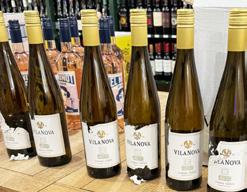
• Please note that due to the liquid nature of the label coating system, all wines are haphazardly repacked in nondescript brown boxes which we somehow can’t work out how to construct properly.
“Let’s Chuck Boxes offers a truly standout service for a truly noggin-confusing price. Don’t let your wine fester in the corner of a leaky warehouse when it could be treated like Duplo bricks in an understaffed nursery!"
PLEASE NOTE: Whilst our warehouse makes every effort to make it look as though we really didn’t give two hoots about your wine, our delivery network cannot be relied on to be as carefree in their attitude. We are aware of recent reports that wines arrive on time, with a smile and a helping hand. We are currently looking into this and are exploring radical new ideas for our end-of-journey logistics.

A chance to meet producers from across Wales, some of them showcasing awardwinning wines.
Those attending include Hebron, Jabajak, Llaethliw, White Castle, Velfrey, Ancre Hill Estates, The Dell, St Hilary, Whinyard Rocks and Montgomery.
For more information and to register, contact lauren.smith@levercliff.co.uk.
Tuesday, May 28
Mad Dog Brewery 17-19 Castle Street Cardiff CF10 1BS
What is billed as Edinburgh’s only independent summer wine fair will bring together more than 30 producers.
Wine writer Susy Atkins and wine educator Diana Thompson are behind the show which aims to throw the spotlight on wines from off the beaten track.
Contact diana@wineeventsscotland. co.uk to register.
Saturday, June 1
Assembly Rooms 54 George Street
Edinburgh EH2 2LR
The event features mainly French winemakers seeking UK importers and representation.
Wines from Côtes du Rhône, Bergerac, Montlouis, Alsace, Terrasses du Larzac, Languedoc, Bordeaux and Mâconnais will be poured.
There’ll also be one producer from Paarl in South Africa.
Register via richard@iubentium.co.uk.
Monday, June 3
Noizé
39 Whitfield Street London W1T 2SF
The Bourgogne Wine Board is hosting masterclass tastings in York and Exeter. Both events will be led by Michelle Cherutti-Kowal MW.
The York masterclass will be a journey through the lesser-known Bourgogne appellations, while the Exeter session will focus on Premier Cru Chablis wines. Contact aloisel@sopexa.com.
Monday, June 3
Radisson Hotel
North Street
York YO1 6JF
Monday, June 24
Hotel du Vin
The tasting offers the chance to meet representatives from more than 40 wineries from across Italy’s rich winemaking landscape.
Masterclasses will led by John Downes MW and Walter Speller, Italy editor for Jancis Robinson’s website.
For more information and to request an invitation contact londra@ice.it.
Tuesday, June 4
Lindley Hall
80 Vincent Square
London SW1P 2PB
More than 70 producers will attend this biennial tasting, with 400 wines on show.
Bancroft says guests will have the opportunity to sample an extensive range, from by-the-glass staples to premium wines, with a large selection of organic, biodynamic and vegan-friendly options.
Contact hvansusteren@bancroftwines. com to register.
Tuesday, June 11
Lindley Hall
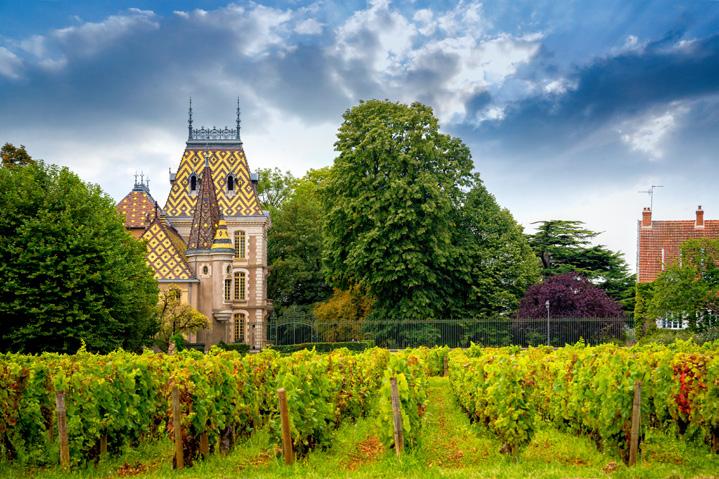
The annual trade tasting for wines of the Occitanie region returns, with winemakers from the south of France heading to London.
For more information and to register, contact sebastienduboullay@occitanielondon.com.
Wednesday, June 12
London venue TBC
The annual tasting will feature producers from around the world. Recent additions to the Davy’s portfolio include Chile’s La Ronciere, Josep Grau in Spain and Argentinian producer Durigutti Family Winemakers.

highlighting some older vintages, followed by a party.
There will be a masterclass with Bertrand Sourdais, Cabernet Franc specialist and fifth-generation winemaker at Loire producer Domaine de Pallus.
For more information and to register, contact lumam@davy.co.uk.
Wednesday, June 12
Royal Over-Seas League 6 Park Place London SW1A 1LR
Italy’s first consorzio will celebrate its centenary in central London.
This invitation-only event will include a walk-round tasting with 35 producers
To request an invitation, email victoria@ dillonmorrall.com.
Wednesday, June 12
Venue TBC on invitation
For the first time in the UK, Wine Australia and New Zealand Winegrowers will team up to run an inperson trade masterclass.
Ten wines will be tasted during the masterclass in Manchester, with 50 wines in a free-pour tasting.
The masterclass will be presented by
Wine Australia’s Emma Symington MW and wine writer and consultant Rebecca Gibb MW, and will feature sparkling wine, Sauvignon Blanc, Chardonnay, Pinot Noir and Shiraz.
The tasting will include Tasmanian sparkling wine, Eden Valley Riesling, Coonawarra Cabernet Sauvignon, Marlborough Sauvignon Blanc, Central Otago Pinot Noir and Gimblett Gravels Syrah. Lesser-seen varieties featured include Albariño, Vermentino, Gamay, Cabernet Franc and Nebbiolo.
New-wave styles will also be on show including pét nat, skin contact and minimal intervention wines.
All of the wines are available in the UK.
For more information and to register, contact cstroud@nzwine.com.
Monday, June 17
The Castlefield Rooms 18-20 Castle Street Manchester M3 4LZ
A selection of wines from the familyowned producer’s Italian estates will feature in the tasting.
There will also be wines from France, Spain, South Africa, Chile, Argentina and New Zealand.
Contact massimo.pighin@zonin1821. com to register.
Tuesday, June 18
Haberdashers’ Hall
18 West Smithfield
London EC1A 9HX
There’s the opportunity to taste more than 80 English wines at this annual tasting, organised by contract winery Defined.


Taste the fruit of old vines on June 19
Producers will be showcasing a range of wines from 2023, alongside earlier vintages, including barrel-aged still Chardonnays and Pinot Noirs, rosé, pét nat and traditional method sparkling wines.
There will be an opportunity to meet Defined founder Henry Sugden and winemaker Nick Lane – formerly of Cloudy Bay, Moët & Chandon and Dom Pérignon –and producers from each vineyard. Register via madeleine@wearco.co.uk.
Tuesday, June 18
Yeomanry House
Handel Street
London WC1N 1NP
This international tasting brings together 11 countries.
There will be two masterclasses for guests to learn more about their wines in
addition to tasting them.
For more information and to register, contact zsuzsa@winecom.co.uk.
Tuesday, June 18
St John’s Church
Waterloo Road
London SE1 8TY
This tasting is being billed as featuring the largest selection of old-vine wines from around the world.
There will be 130 wines to taste, from Argentina, Austria, Italy, Turkey, Spain, South Africa and many more countries.
Highlight will include the winners from the 2024 Old Vine Hero Awards. Register through belinda@oldvines.org.
Wednesday, June 19
67 Pall Mall
London SW1Y 5ES
12-14 Denman Street
London W1D 7HJ
0207 409 7276
enquiries@louislatour.co.uk www.louislatour.co.uk

@louislatouruk


hallgarten wines
Mulberry House Parkland Square 750 Capability Green Luton LU1 3LU 01582 722 538
sales@hnwines.co.uk www.hnwines.co.uk



@hnwines
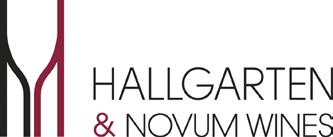
The historic estate of Château Sainte Roseline can trace its roots back to the 12th Century, being one of the oldest wine estates in Provence, and importantly one of only 18 remaining Cru Classé estates in the region. Today, this family winery, located in the Les Arcs-Sur-Argens, near the bay of Saint-Tropez, is owned and managed by Aurélie Bertin.
The 2023 vintage showed signs of extreme heat and stress, however the unique underground spring located beneath Château Sainte Roseline allowed the grapes to grow and flourish, preventing them from suffering the worst of the drought conditions.
These juicy berries provided the backbone for extremely concentrated grapes, which can be found in the stunning red, white and rosé wines.
For more information, please contact sales@louislatour.co.uk or scan the QR code.





Mark Isham
South of UK 07824 816971
mark@richmondwineagencies.com
Julia Langshaw North of UK 07932 770636
julia@richmondwineagencies.com
Tim Hawtin
South West of UK 07584 238573
tim@richmondwineagencies.com




7-9 Elliott’s Place
London N1 8HX
020 7288 8888
sales@jeroboamstrade.co.uk www.jeroboamstrade.co.uk

@jeroboamstrade


hatch mansfield
New Bank House 1 Brockenhurst Road Ascot Berkshire SL5 9DL 01344 871800
info@hatch.co.uk
www.hatchmansfield.com

@hatchmansfield

The Woolyard
52 Bermondsey Street
London SE1 3UD
020 7840 3600
info@mentzendorff.co.uk
www.mentzendorff.co.uk

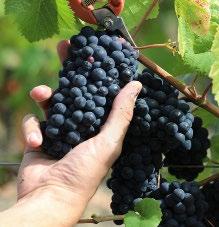


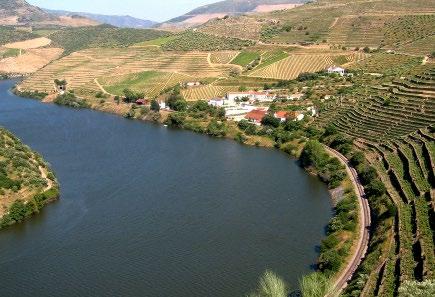
Mentzendorff are excited to be returning to the London Wine Fair this year after 12 years away. Join us on stand to meet with producers and taste a varied selection of our range, including new agencies Ponzi vineyards and Fladgate Still and Sparkling Wines. We also encourage guests to sign up to enjoy a jam-packed schedule of expertly led masterclasses from the likes of Taylor’s Port, Champagne AYALA, Jean-Luc Colombo and Anaë Gin to name just a few.
Join us on the Mentzendorff Stand E38 at London Wine Fair at Olympia from 20 to 22 May.
buckingham schenk
Unit 5, The E Centre
Easthampstead Road
Bracknell RG12 1NF
01753 521336
info@buckingham-schenk.co.uk
www.buckingham-schenk.co.uk


@BuckSchenk
@buckinghamschenk


4 Pratt Walk, Lambeth
London SE11 6AR
0207 735 6511
www.thormanhunt.co.uk

@thormanhunt
sales@thormanhunt.co.uk




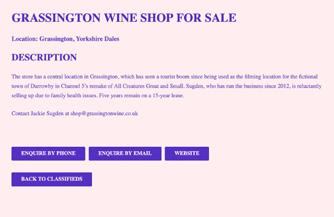

Fells House, Station Road
Kings Langley WD4 8LH
01442 870 900
For more details about these wines and other wines from our awardwinning portfolio from some of the world’s leading wine producing families contact:
info@fells.co.uk www.fells.co.uk

@FellsWine

je_fells

walker
109a Regents Park Road London NW1 8UR
0207 449 1665
orders@walkerwodehousewines.com www.walkerwodehousewines.com


@WalkerWodehouse


“An

Chateau Musar announces the release of the 2018 vintage of their iconic red wine.

Walker & Wodehouse is delighted to welcome Silverhand Estate and Weyborne to the portfolio.
Based in Luddesdown, Kent, and nestled in an area of Outstanding Natural Beauty, Silverhand makes the most of its terroir and Kimmeridge clay, producing Chardonnay, Pinot Noir and Meunier, perfect for creating premium English sparkling wines. It is now the single largest organic vineyard in the UK, producing four exceptional sparkling wines: Silverhand Brut NV, Silverhand Blanc de Blanc 2018, Silverhand KYNG 2018 and its Silver Reign Charmat

Weyborne Estate sits at the highest point of South Downs National Park, surrounded by rolling hills, green pastures, and beauty of the quintessentially English countryside. The historic house on the estate dates to 1640, at the foot of the ancient River Wey, England’s purest water source. Just as the water breathed life into the gardens over the centuries, it continues to feed the vines. Since the vines were first planted in 2007, Weyborne seen the classic Champagne varieties Chardonnay, Pinot Noir, and Pinot Meunier flourish. With these, they create exceptional single estate sparkling wines using the traditional method.
For more information, please contact your account manager.
The Old Pigsty, Rose Cottage Church Hanborough OX29 8AA 01993 886644
orders@delibo.co.uk www.delibo.co.uk

The computer system for drinks trade wholesalers and importers
16 Station Road Chesham HP5 1DH
sales@vintner.co.uk www.vintner.co.uk


Delibo and Don Cristobal join forces
Over half a million lovingly-farmed organic vines at the Lapania family’s four distinct Fincas in Mendoza, at Lujan de Cuyo, Junin and Rivadavia, make this family estate very special and something of a rarity: 100% estate grown and bottled. Delibo is honoured to represent Don Cristobal throughout the UK from May 2024.

If you are looking for something classier AND competitive, this could be the range for you, in a very busy category. At Delibo, we always aim to offer the best in class. After all, you and your customers are worth it! Contact Delibo Wine Agencies for information and samples. The Argentina revolution is ready to continue ...



020 7720 5350
order@libertywines.co.uk www.libertywines.co.uk @liberty_wines





Few countries can match the vinous diversity offered by Portugal, with over 250 native grape varieties providing a wealth of exciting, characterful wines to explore.
In the Douro, Casa Ferreirinha’s Vinha Grande Branco 2022 – a masterful blend of Viosinho, Arinto, Rabigato and Gouveio – is sourced from their Quinta do Sairrão estate, sitting at 600 metres above sea level and one of the coolest vineyard sites in the Cima Corgo. Partially fermented and aged for six months in new French oak barrels with regular lees stirring, it is a complex and textured expression with a buttery richness from the oak alongside a refreshing acidity.
Encruzado is increasingly popular in varietal form in the Dão, where Quinta dos Carvalhais has championed this versatile variety since 1988. Their Encruzado 2022 is sourced from two cooler plots on the estate to give lively acidity, as well as one with more sandy soils producing intensely aromatic grapes. Also partially fermented and aged for six months in new French oak barrels, with frequent bâtonnage to increase texture and body, it marries the vibrancy of the variety with delicious toasty notes from the oak.

The prestigious Quinta da Romeira is believed to have the world’s largest Arinto vineyard, with 75 hectares on clay-limestone soils in historic Bucelas. Their Morgado de Santa Catherina 2022, aged for nine months in French oak barrels (40% new) with regular bâtonnage, displays wonderful brioche aromas with Arinto’s characteristic zesty fruit.
top selection
23 Cellini Street London SW8 2LF
www.topselection.co.uk info@topselection.co.uk
Contact: Alastair Moss
Telephone: 020 3958 0744


@topselectionwines
@tswine


Looking to strengthen your German o ering? Then Nik Weis wines should be on your radar!
Nik Weis and his family have been practicing sustainable viticulture for generations in the Mosel and Saar valleys. Today, the estate covers 40h and owns vineyards in 5 VDP Grosse Lagen (Grand Cru) vineyards. Among these are famous sites such as Ockfener Bockstein, Leiwener Laurentiuslay and Piesporter Goldtröpfchen.










“It’s all about single sites and even single parcels within them...above all, it’s about old vines.“
Nik Weis
“I’m a sceptic about wine criticism … it’s boring and offputting”Andrew Jefford Writer and broadcaster
Born in 1956, Andrew Jefford is one of the most distinctive voices in the world of drinks writing. His books include The New France (2002) and Drinking with the Valkyries (2022). He lives near Montpellier with his wife and two sons.
What’s the first wine you remember drinking?
Dubonnet (my paternal grandmother’s favourite tipple) and Findlater Dry Fly Sherry (there was always an opened bottle – of indeterminate age – at my maternal grandparents’ house). Then Champagne –which my brother and I concluded tasted exactly like vomit.
What job would you be doing if you weren’t in the wine trade?
Writing non-fiction books of various sorts (my top choice); political journalism; or working as a civil servant. I would also have enjoyed being a baker (I like getting up early, physical work, warmth – and bread); and being an undertaker (since it requires dignity, sensitivity, respect and compassion; undertakers help the emotionally distressed in a quiet and practical way).
How do you relax?
Exercise. This meant swimming until I got tendonitis in my shoulders; now it means walking, running, and “doing exercises”. I also enjoy cooking and washing up dishes while listening to music or podcasts.
What’s the best book you’ve read recently?
Time of the Magicians by Wolfram Eilenberger.
Give us a Netflix recommendation.

I think we watched The Big Lebowski and Mulholland Drive recently on Netflix, and loved both; and my son tells me that the wonderful Panthère des Neiges (Snow Leopard) by Marie Amiguet and Vincent Munier is now on Netflix. I totally recommend those three.
Do you have any sporting loyalties? Crystal Palace FC.
Who’s your favourite music artist?
Try the Icelandic pianist Vikingur Olafsson – wonderful compilations for DG recently (Mozart and Contemporaries, for example, as well as a Goldbergs reading last year). Saar Riesling in sound. I love the voice and interpretations of singer Ian Bostridge, too (Schubert Lieder, notably Winterreise): so tender, so compassionate, so expressive: Musigny singing.
Who’s your favourite wine critic?
I’m a sceptic about wine criticism: it’s gone too far; it’s boring and offputting; it’s buggering up the wine world by
emphasising an (often spurious) “excellence” at the expense of difference; some of it is borderline corrupt; it generates colossal egos; and almost none of it touches the everyday wine-drinking experience of most wine drinkers. But there are some wonderfully talented and hard-working people writing about wine, including via “wine criticism”, today; the field has never been a more exciting one. I chiefly admire those who are amusing; those who can tell stories effectively; those who are prepared to express interesting and original opinions; those who aren’t afraid of putting the boot in when necessary; those who go way over the top in their astonishment and enthusiasm and just don’t care; and those with broader perspectives, who bond the wine world to the rest of existence.
What’s your most treasured possession?
My walking boots.
What’s your proudest moment?
July 21, 2005 and September 3, 2007 – the days my two sons were born. No other moment to compare. Though of course my wife did all the work ...
What’s your biggest regret?
Having done stupid things and hurt people. Can you get through life without doing stupid things and hurting people? Probably not. But that’s no excuse. Should have tried harder.
Who’s your hero?
Right now, Alexei Navalny.
Any hidden talents?
I can drive well at night. My wife admires my talent for washing and cleaning bins, including dustbins.
What’s your favourite place in the UK?
Islay. Or the Peak District. Hard to choose.
If we could grant you one wish …
I have a long list. Truly tackling the climate apocalypse; helping Afghans, Myanma, Iranians, Sudanese, Haitians and Palestinians live lives of freedom, security and opportunity; disempowering the populists and would-be dictators who now dominate the international political scene. My most pressing wish, though, is to see Ukrainians defeat their Russian invaders, and thereby put an end to the aggressive tyranny of Putin, his mafia state and all those beyond Russia who back him.
